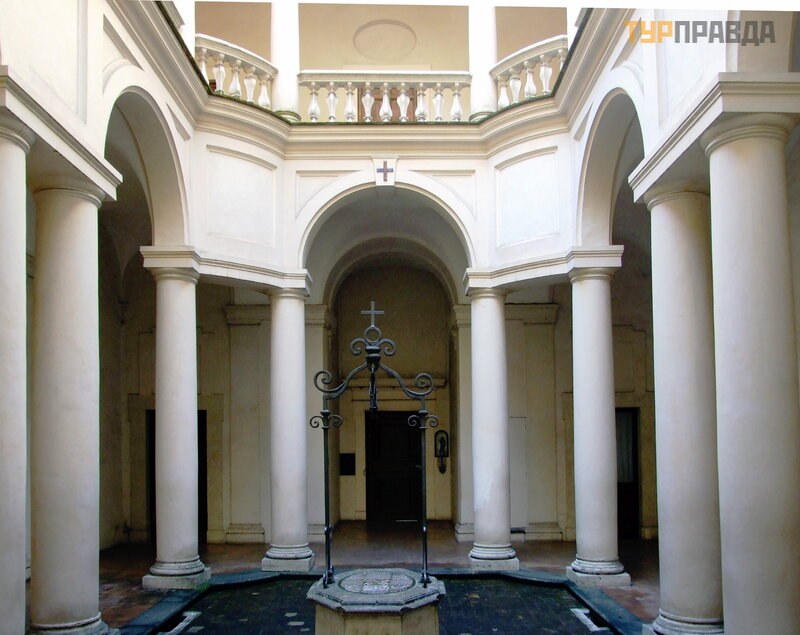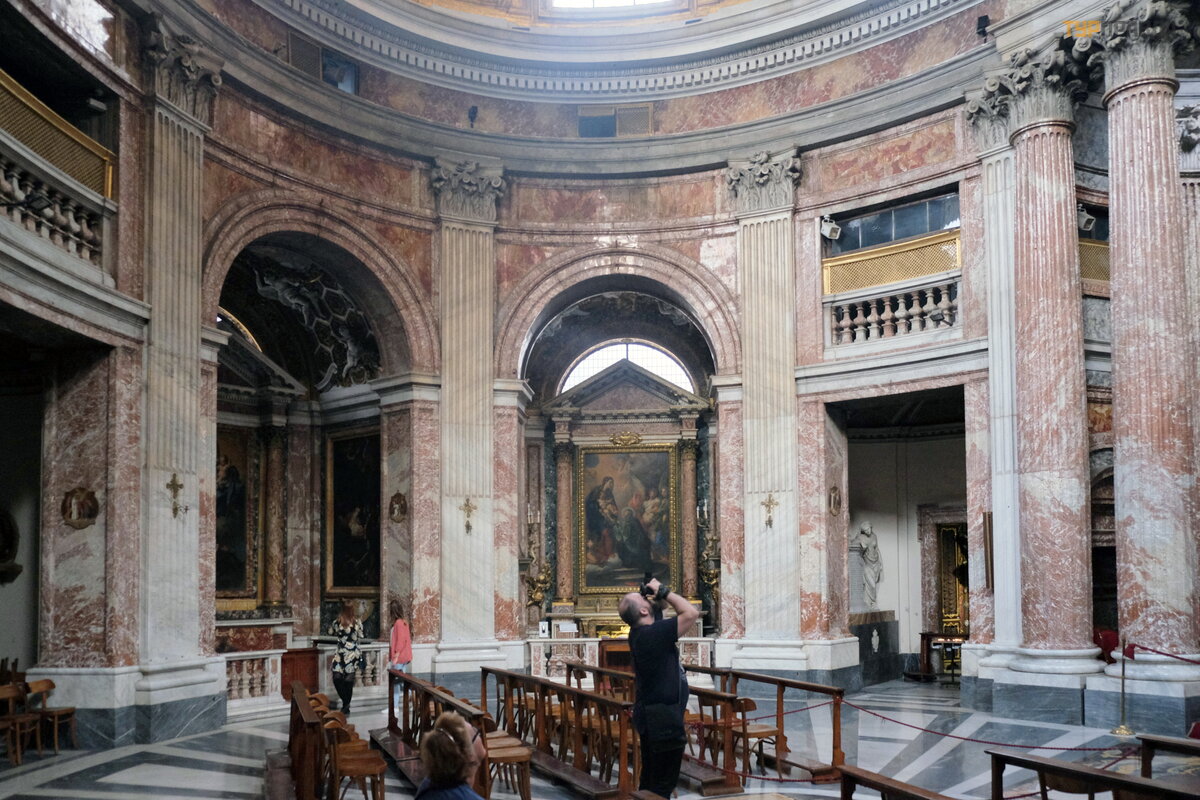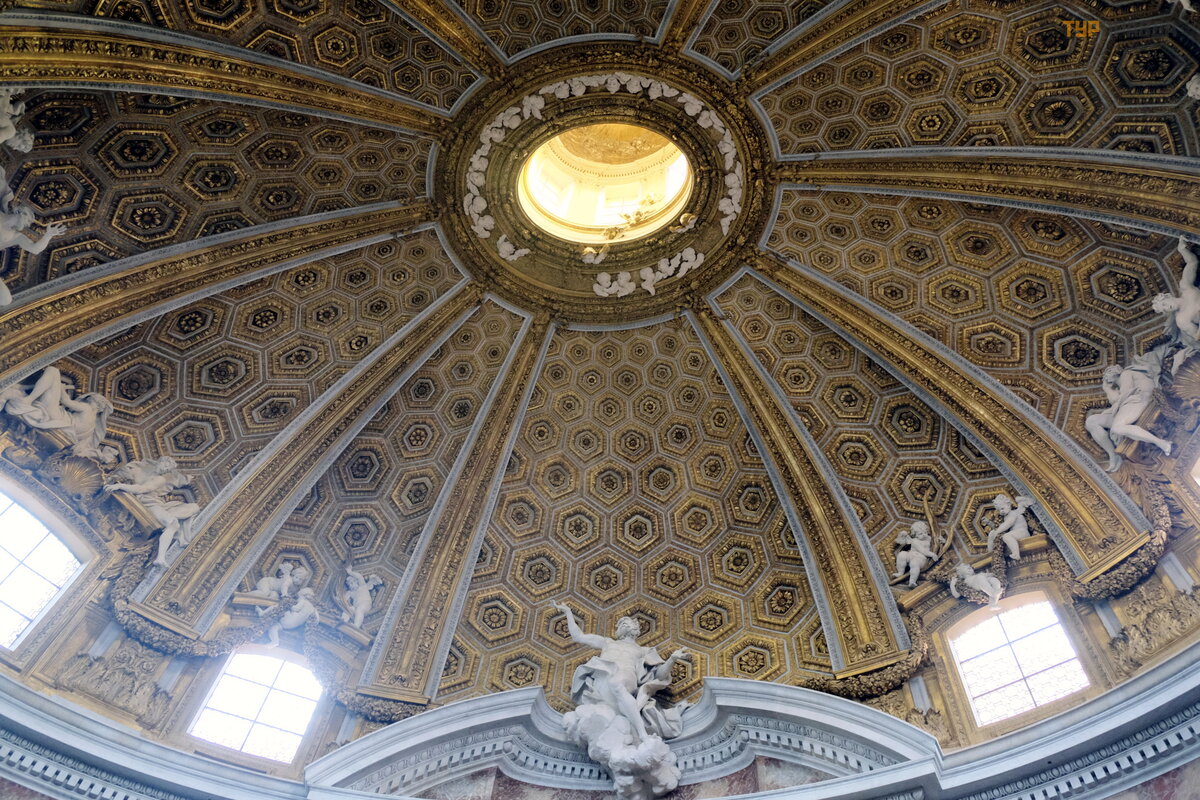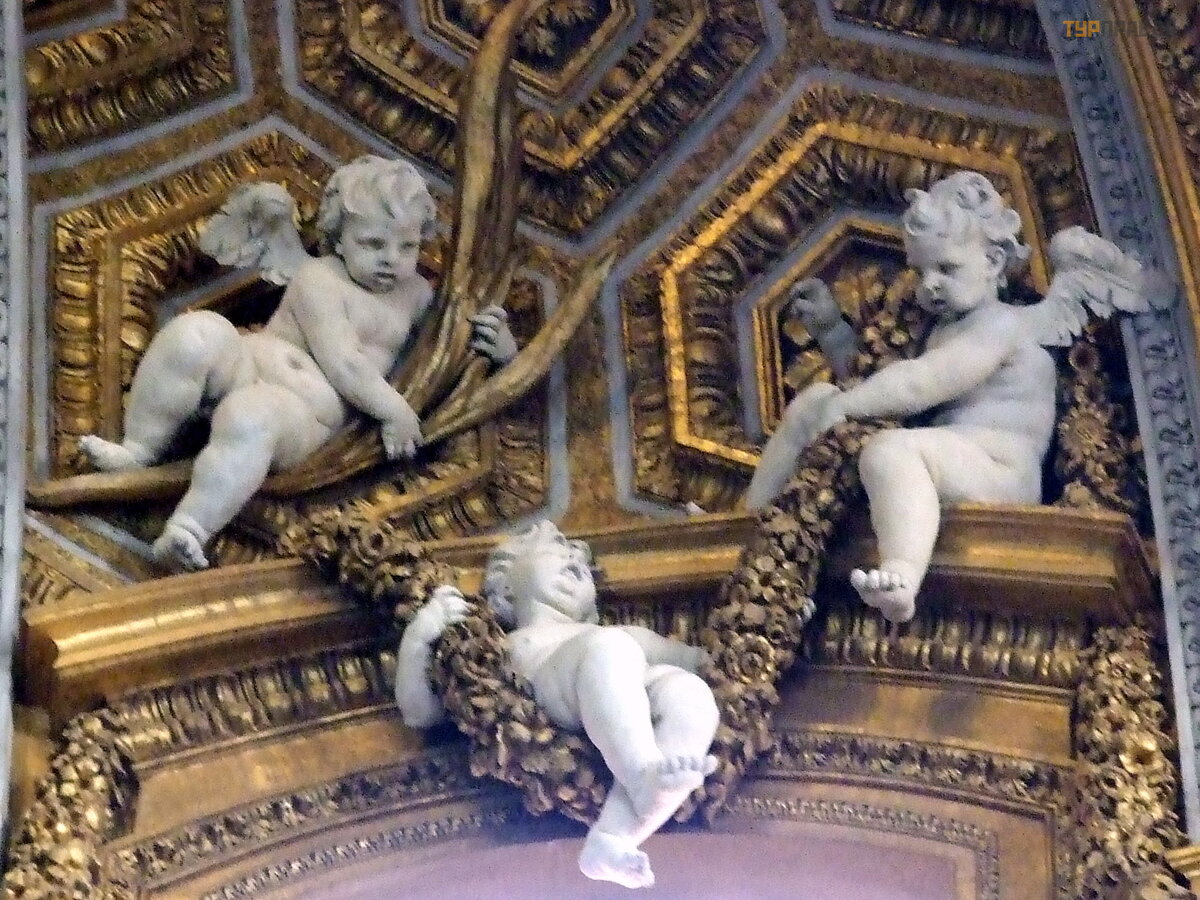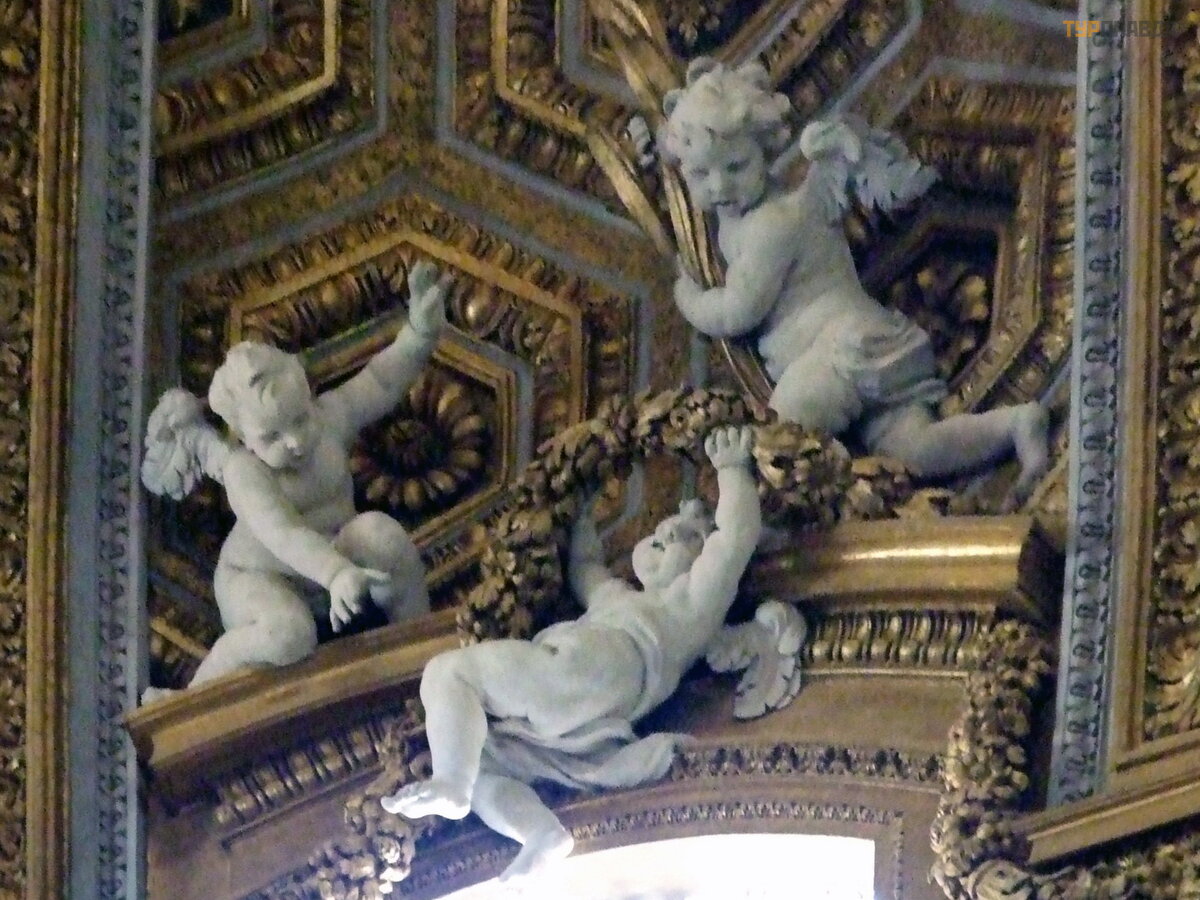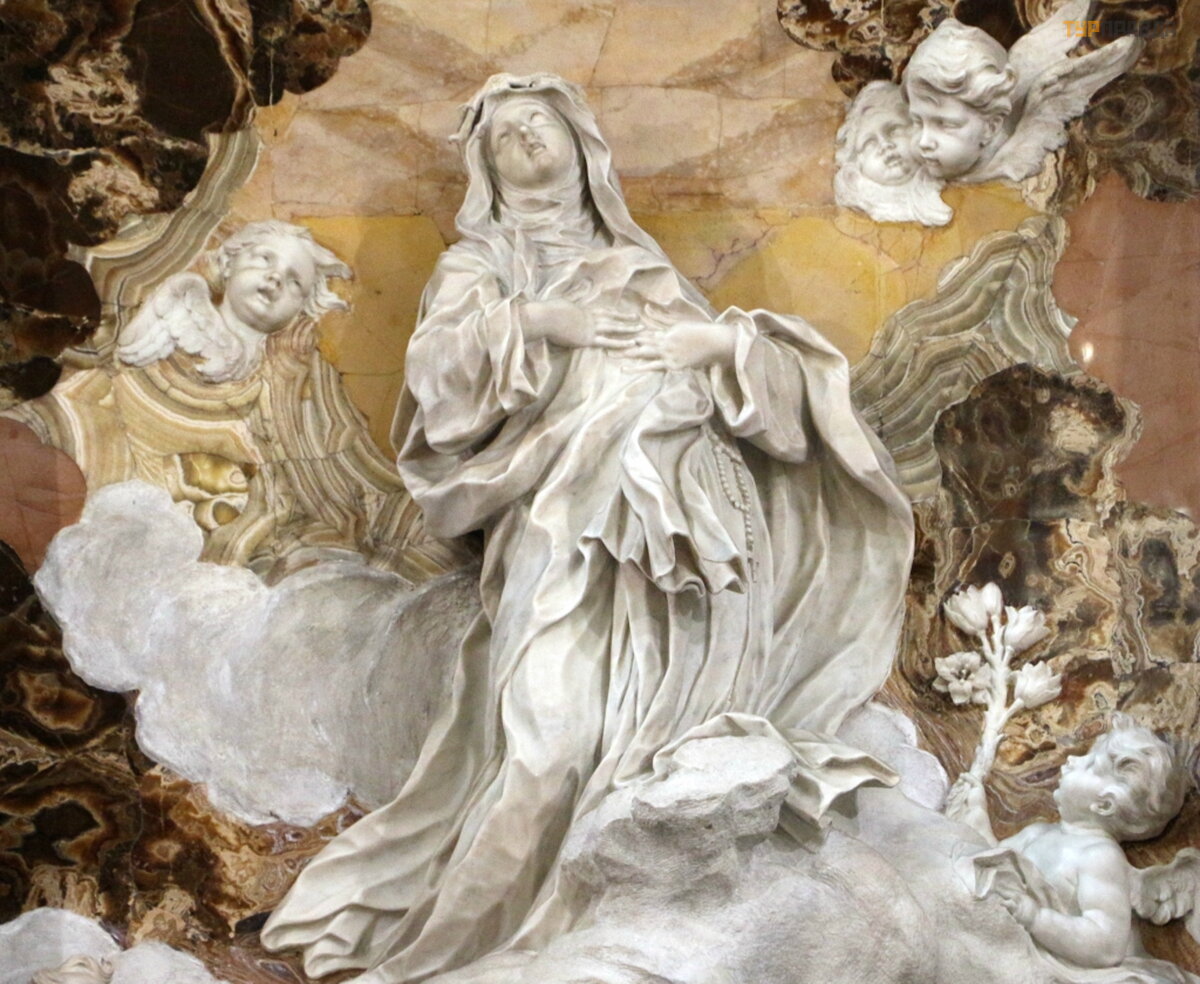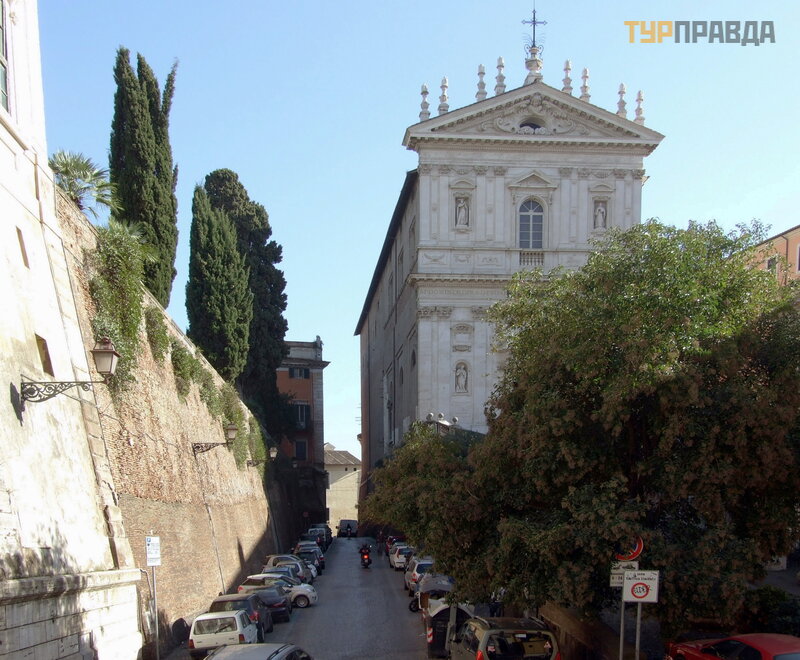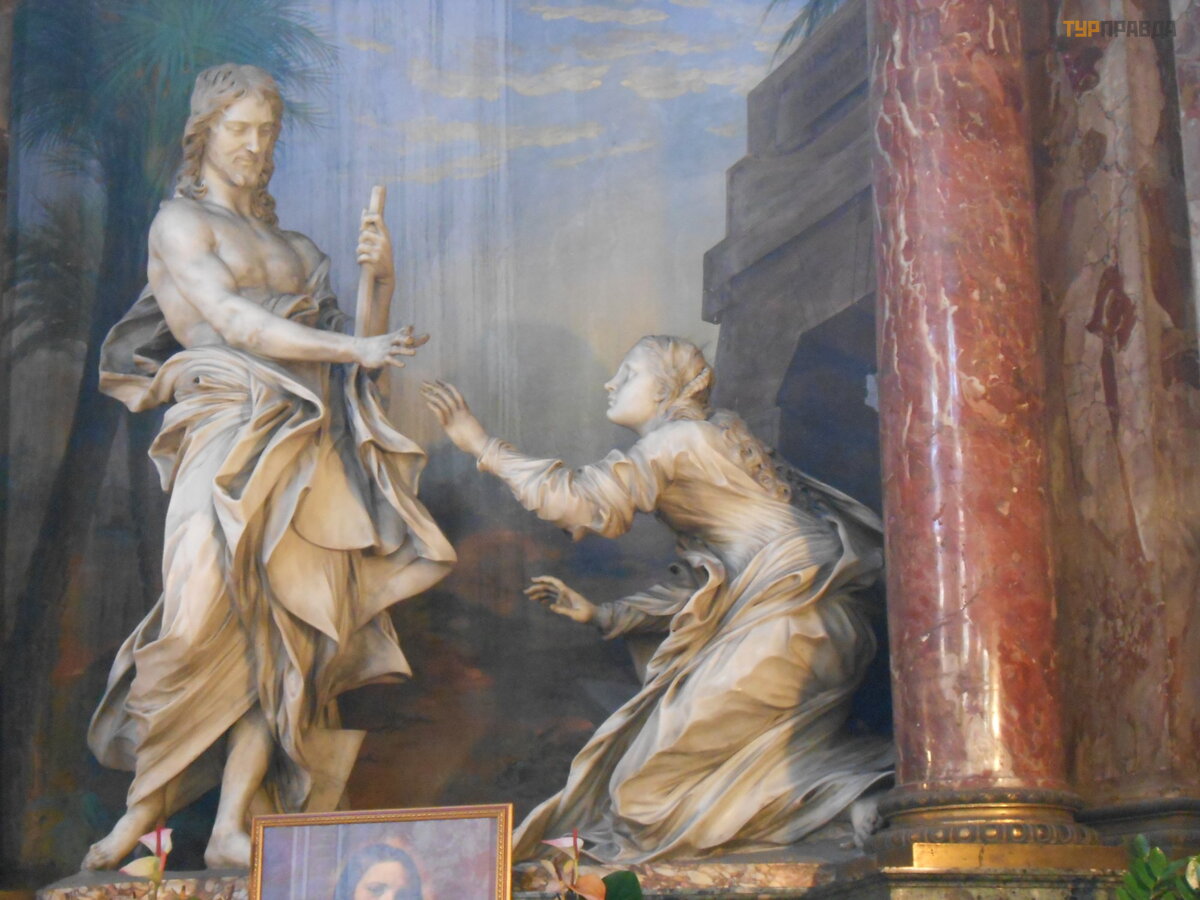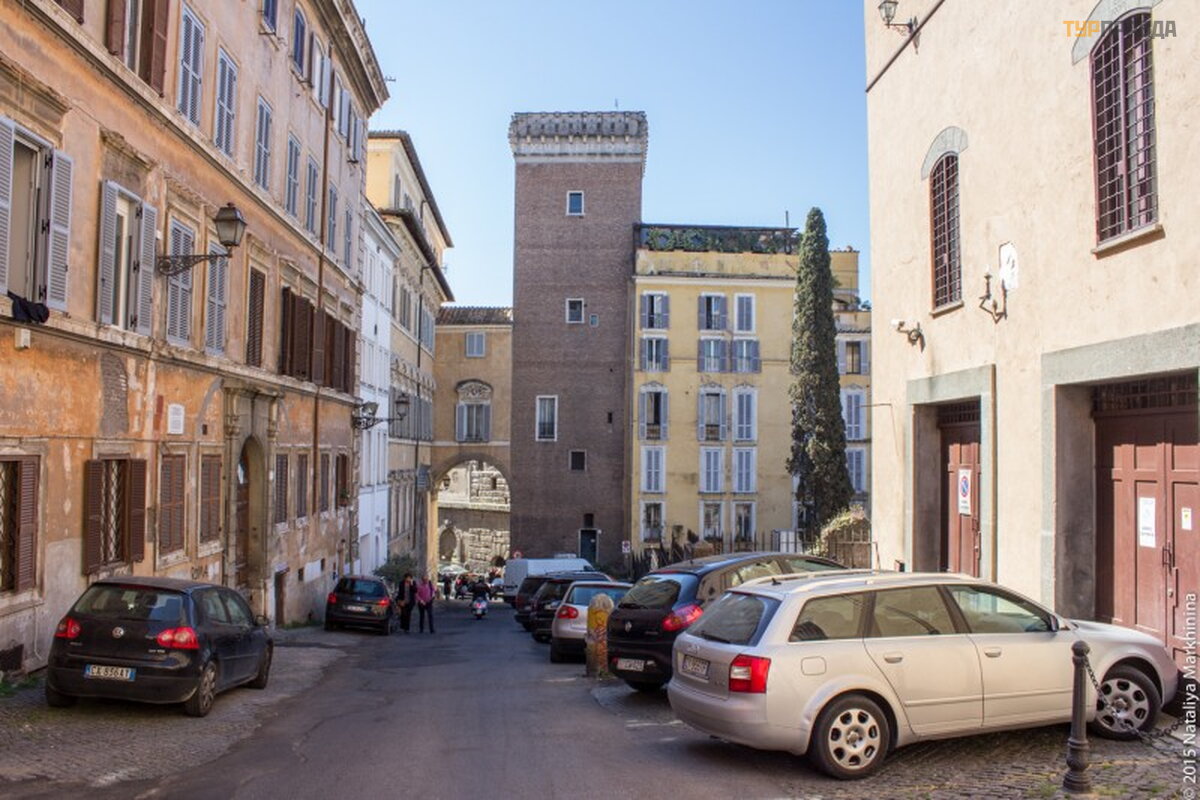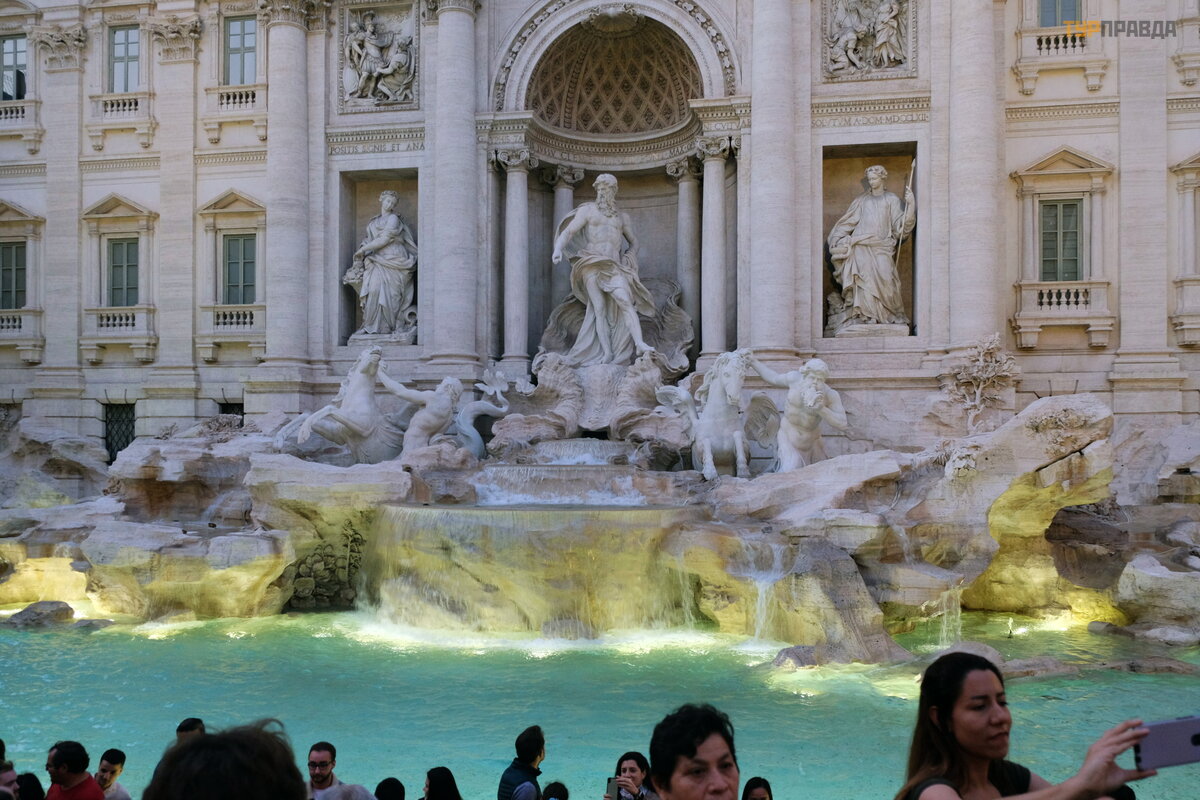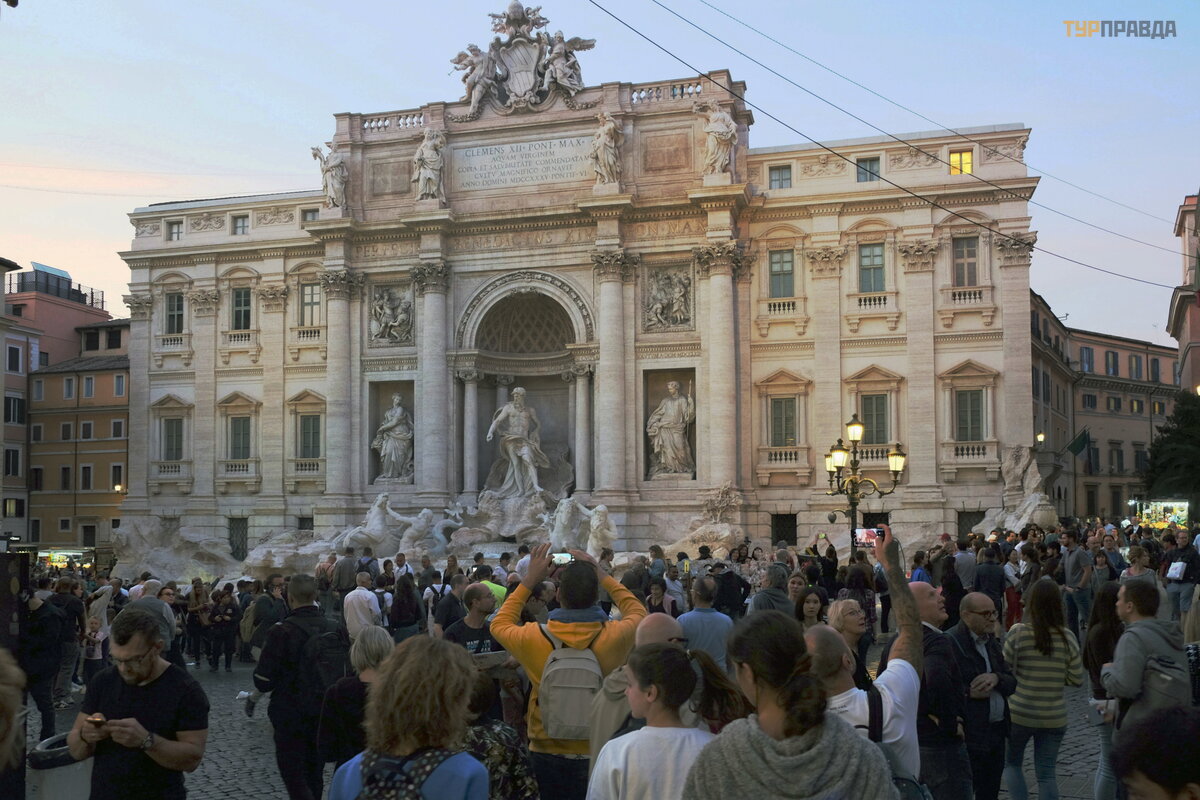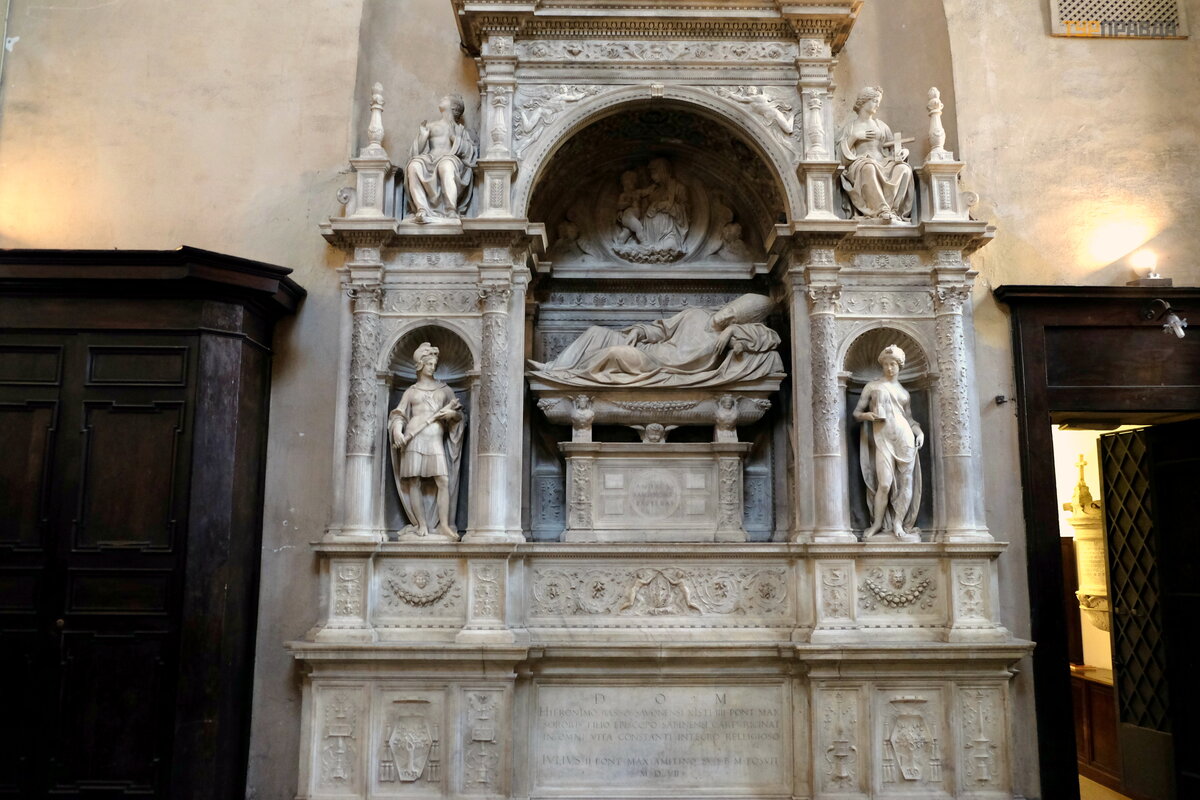Puglia, plus a bit of Rome. Part 14. Rome. Quirinal

To be continued. Start here >>>
After a short rest at the hotel, we set off towards the Quirinal Hill.
From the Esquiline obelisk near Santa Maria Maggiore, the long, narrow Via Agostina Depretis begins, after crossing Via Nazionale, then passing into the Street of the Four Fountains.
The road leads along another hill of Rome - the Viminal. Although the hill is high, the elevation difference here is small. Piazza del Viminale and Palazzo del Viminale is a historic building that has housed the Council of Ministers and the Italian Ministry of the Interior since 1925.
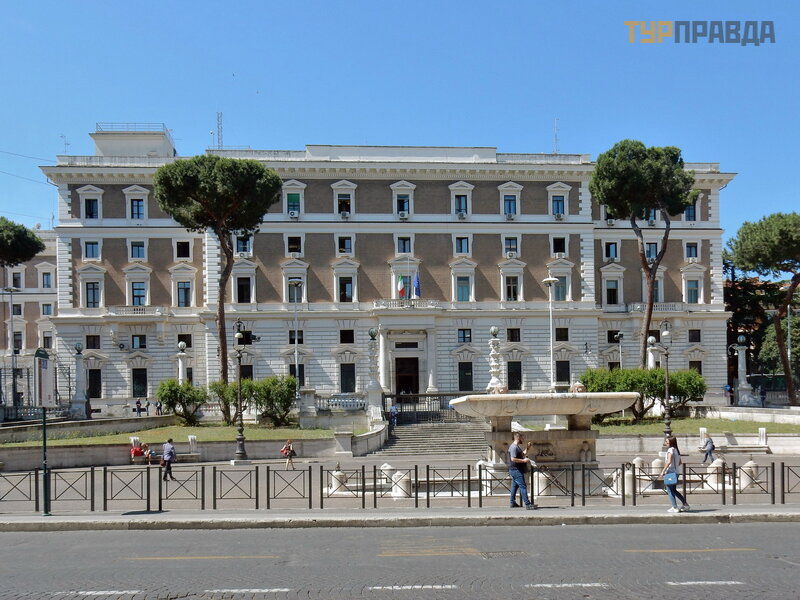
The Square of the Four Fountains is a crossroads, and quite busy, so it is problematic to take a calm photo of these very fountains (488-1593). The fountain of Diana was made by Pietro de Cortona, the other three fountains (Agnene, Tiber and Juno) by Domenico Fontana.
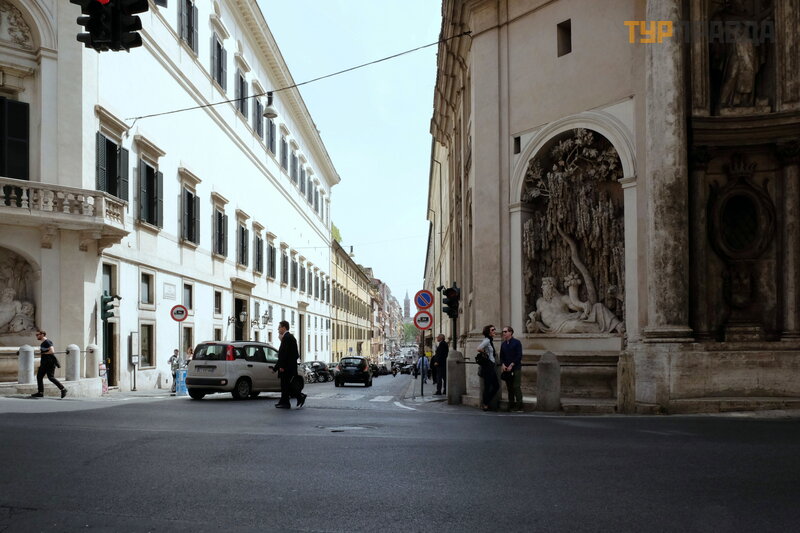
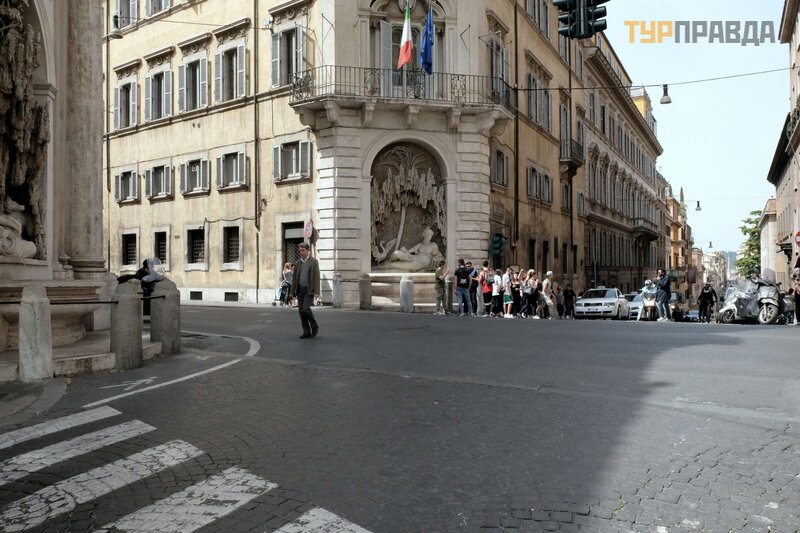
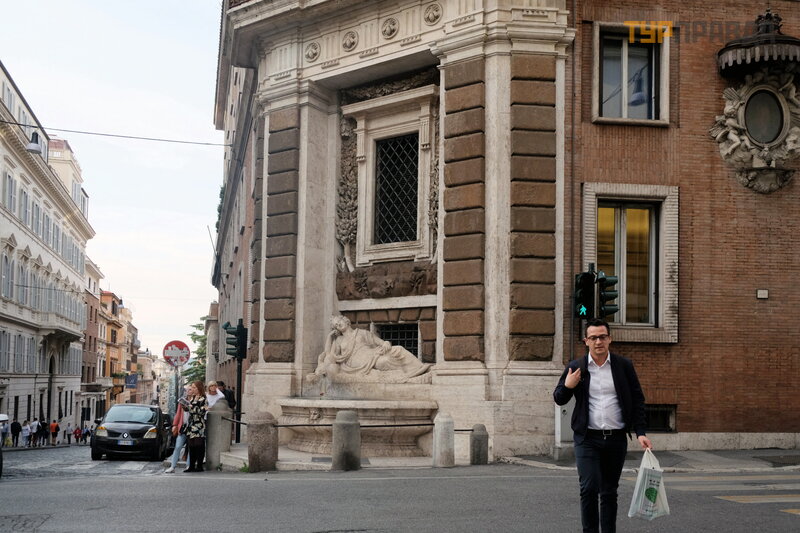
There is also the Church of San Carlo alle Cuatro Fontane, San Carlino (Church of St. Charles at the "Four Fountains").
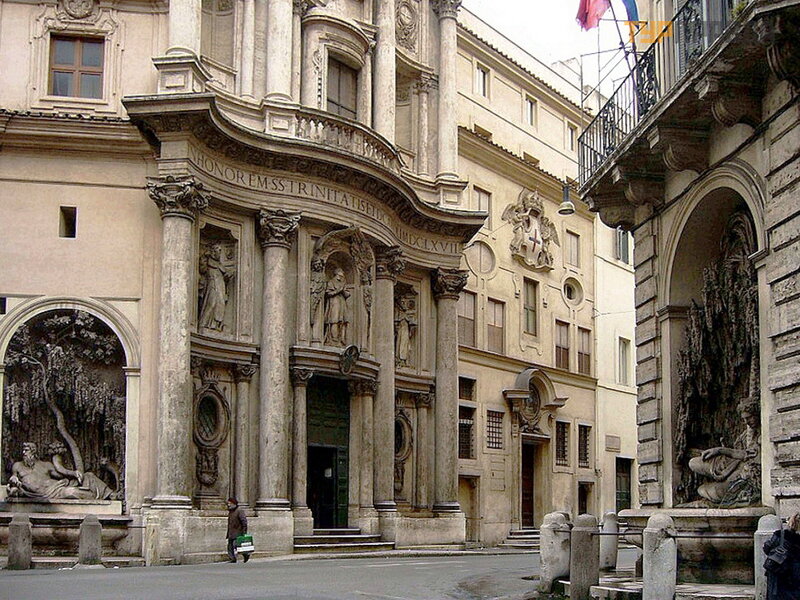
An outstanding work of Francesco Borromini, built 1638-1677. The main advantage of this magnificent building is the plan and facade of the building, demonstrating the main idea of the Baroque style: the flow of space. The doubly curved facade (a combination of convex and concave surfaces) does not seem to be frozen, but a moving, oncoming wave.
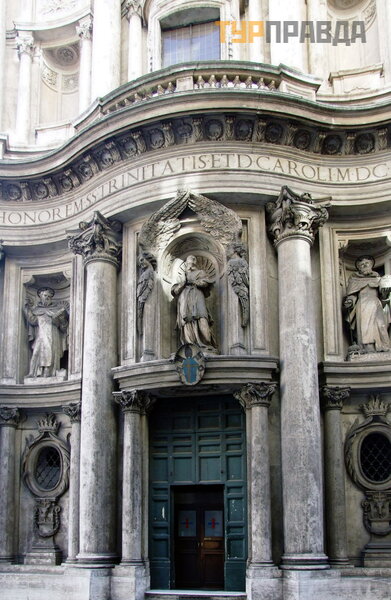
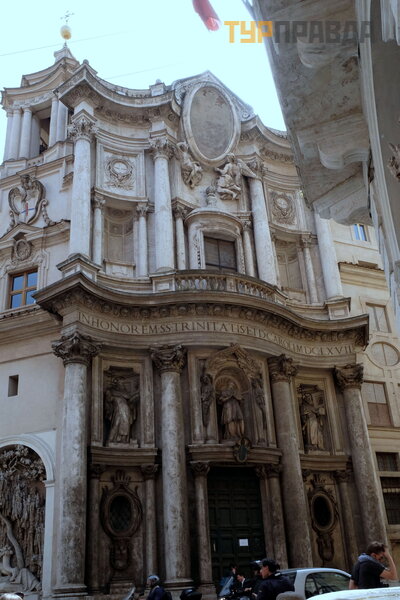
The architecture of Boromini was always ahead of its time, he preferred undulating lines to straight lines, an oval or ellipse to a circle...
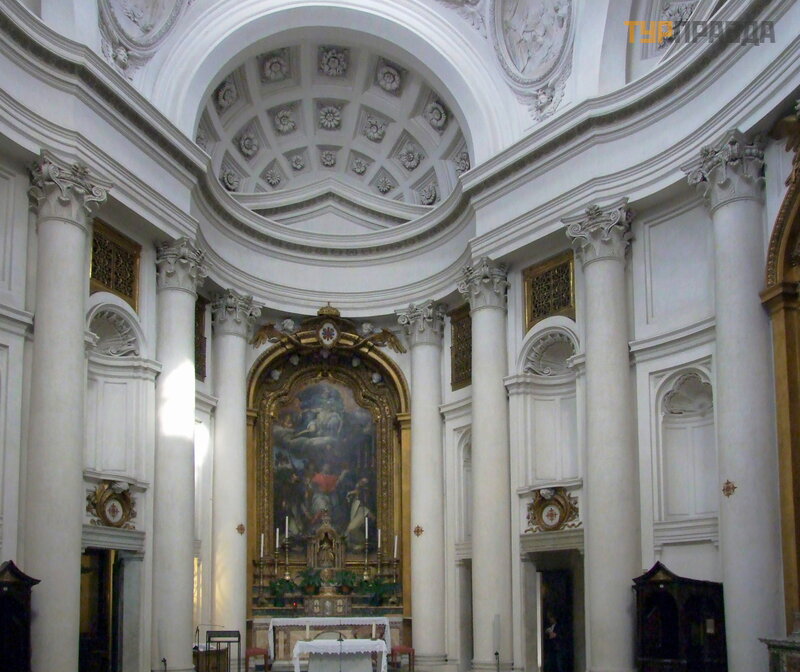
. . . like the ceiling in this church:
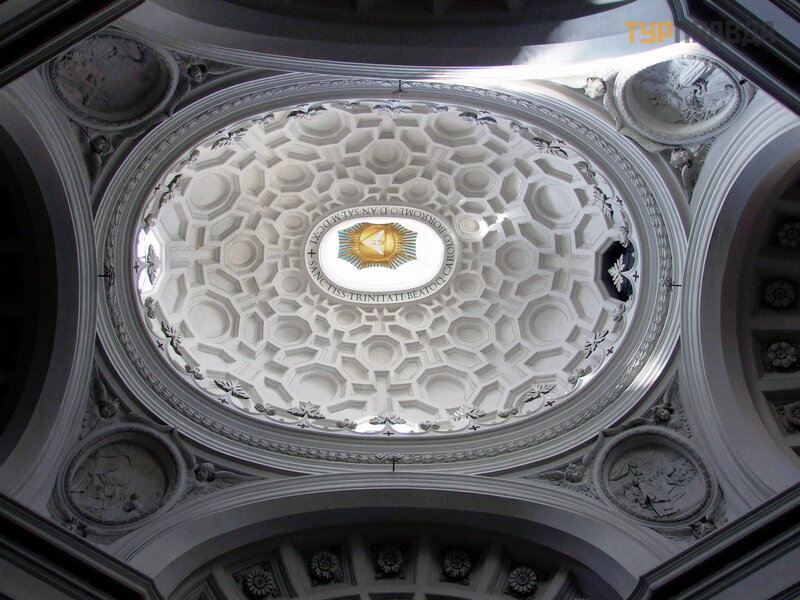
The cloister of the Franciscan monastery adjoining the church is remarkable.

After a couple of hundred meters, the church of Sant'Andrea al Quirinale, built by his eternal rival Bernini in (1658-1678). It was the last and most beloved work of the great architect and sculptor. Moreover, for his work he requested only a daily fresh loaf, which was baked by the monks.
He also used an oval shape in the layout:
Very interesting is the oval dome with funny ornamental putti figures:
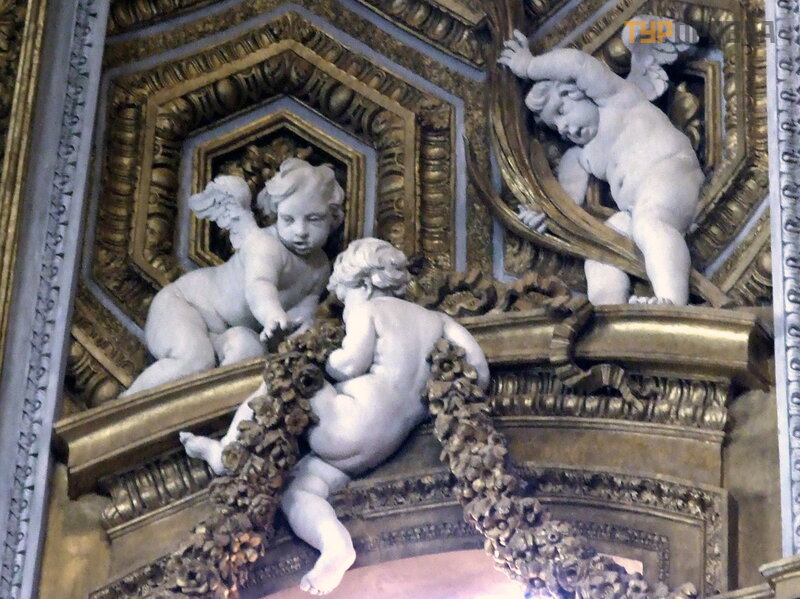
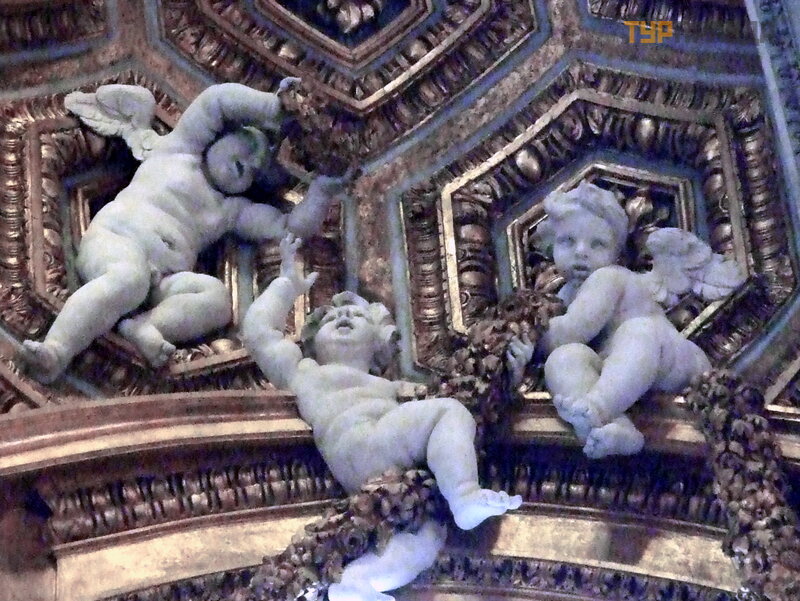
The street goes past the park and the villa of Carl Alberto with a monument to this king:
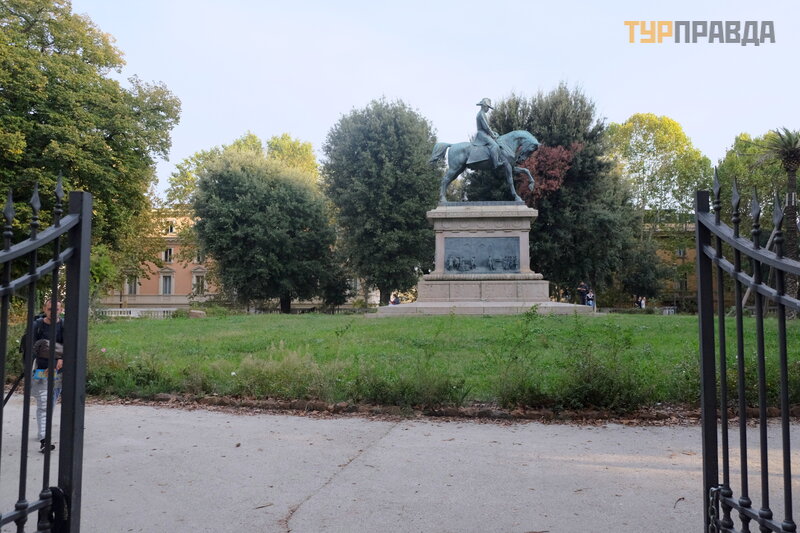
Via Quirinale led to the top of Quirinal, the highest hill of Ancient Rome.
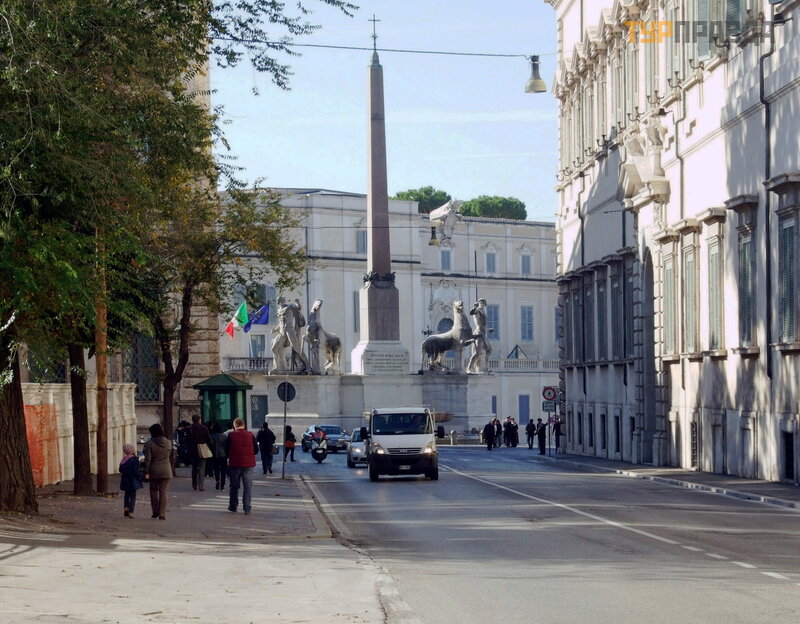
The Quirinal Palace (1573-1583) is the official residence of the President of Italy, before that it was the residence of the popes and kings of Italy. Architects Domenico Fontana, chapel designed by Carlo Maderno. You can get into the palace, but only as part of a group with a guide and by appointment.
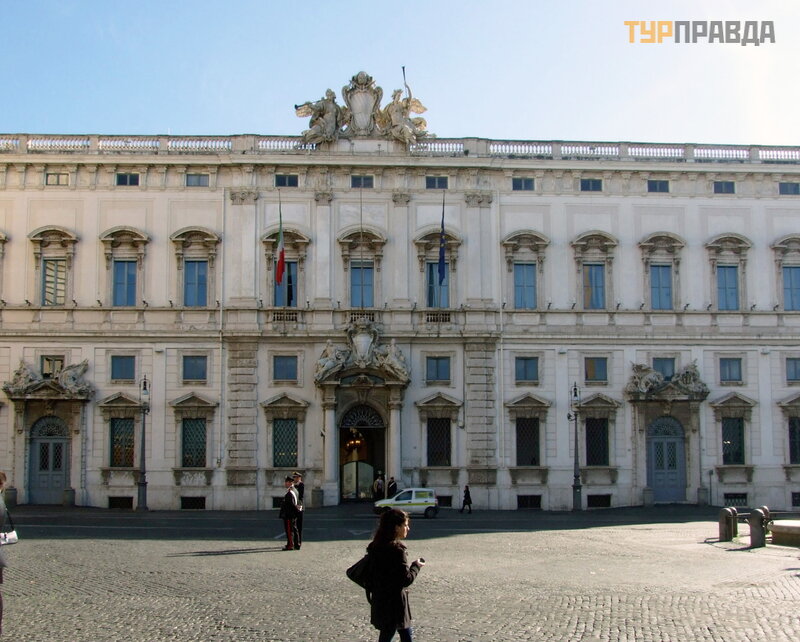
What a colorful palace guard:
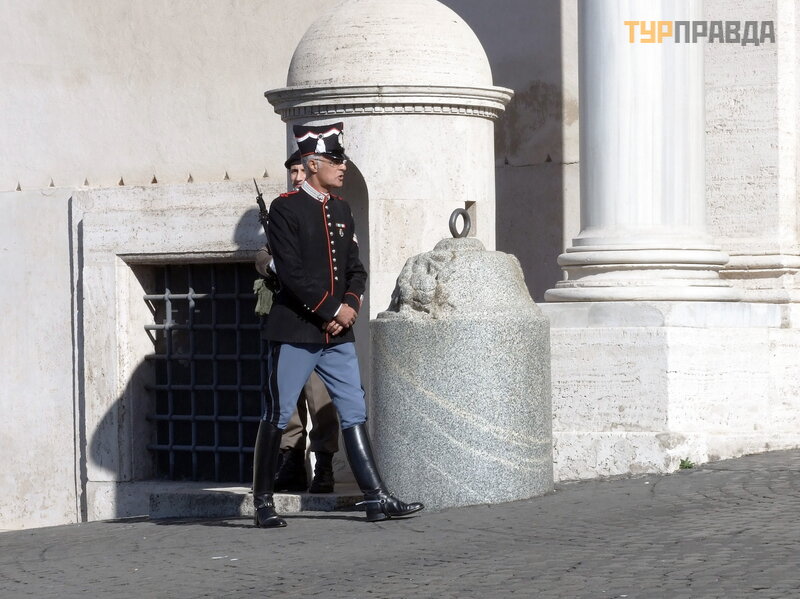
Former papal stables (scuderii) from the 18th century adjoin the palace:
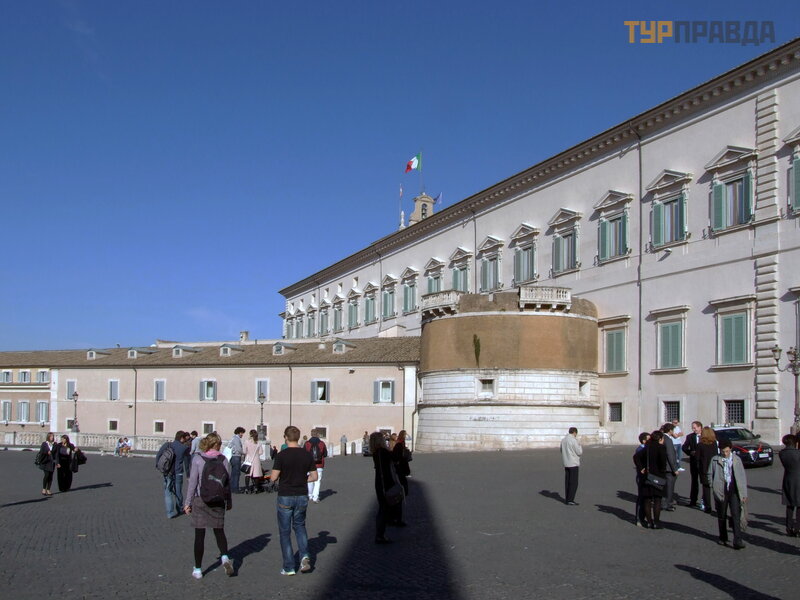
Now there is the Scuderie del Quirinale exhibition center with excellent expositions.
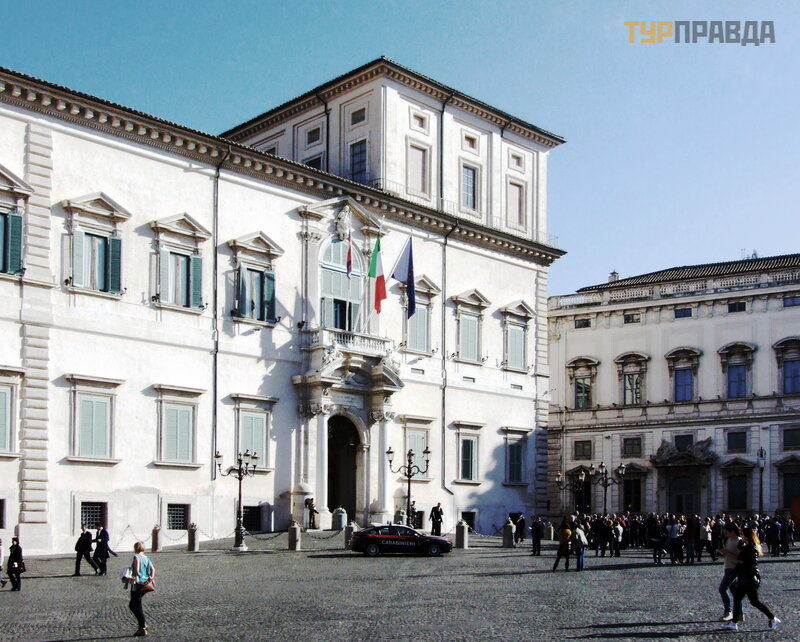
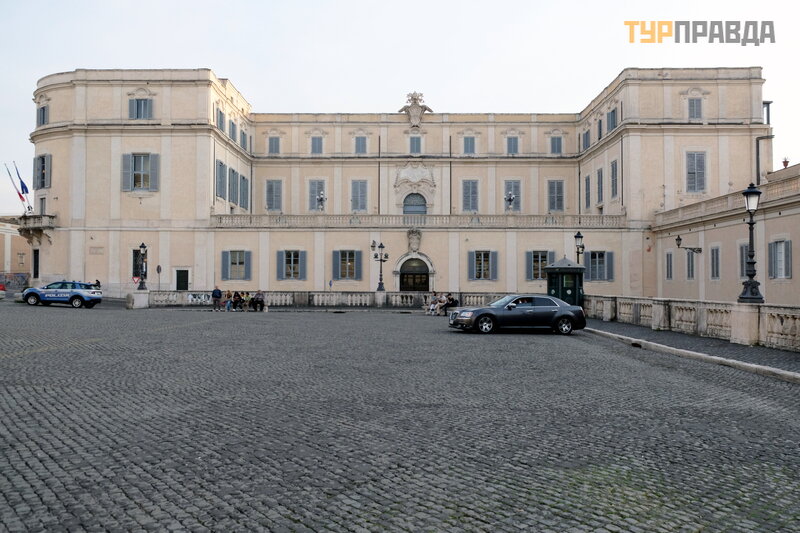
The Fountain of the Dioscuri (1588), by the brothers Domenico and Giovanni Fontana, is installed on the square in front of the palace.
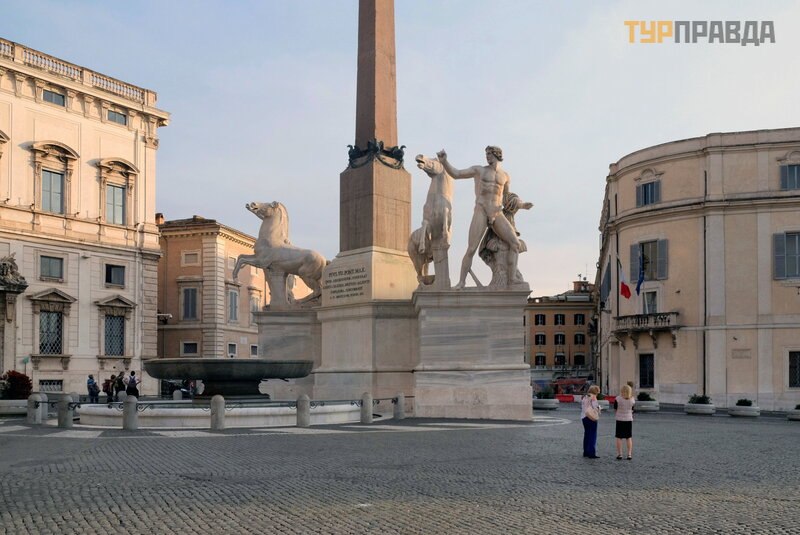
The antique statues of the Dioscuri Castor and Pollux were moved to the square. An Egyptian obelisk was added in the 18th century.
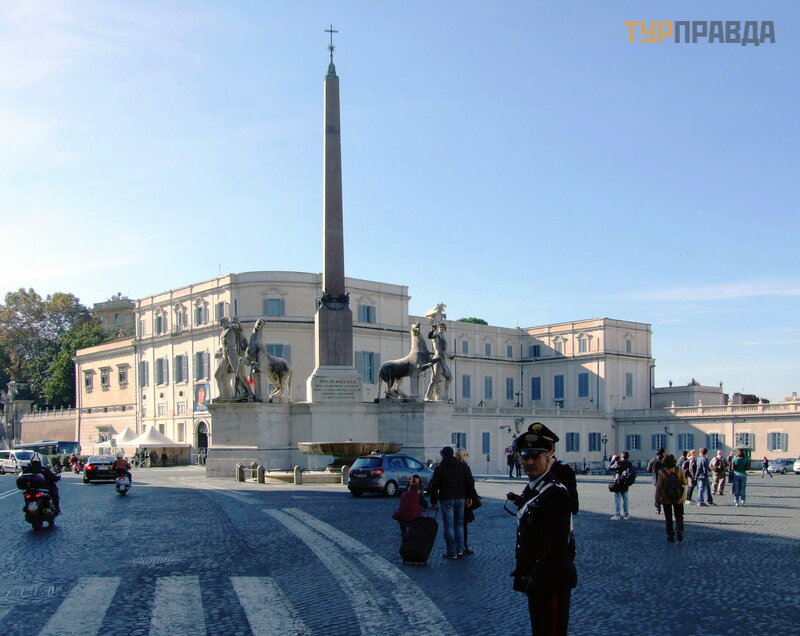
Bottom is the building where the headquarters of the banking group BNP Paribas.
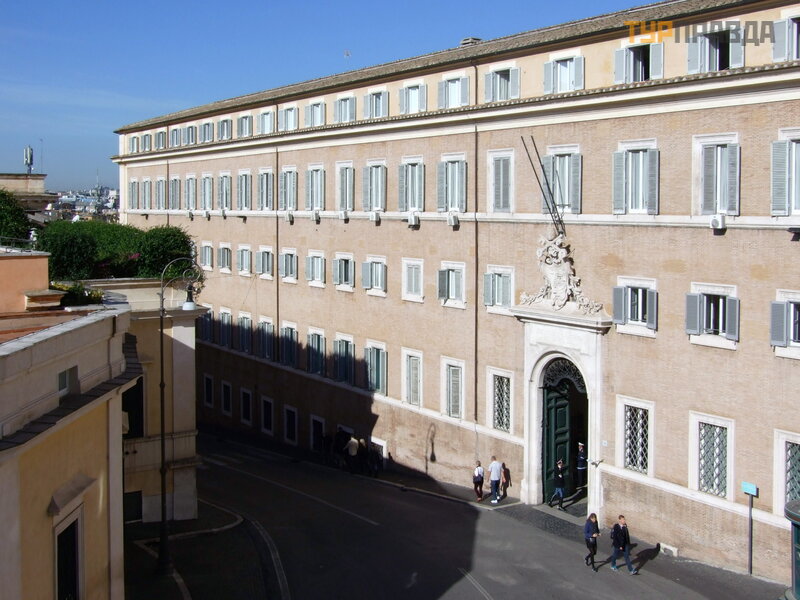
From the square we go down the street "May 24", it turns out that this is the date Italy entered the First World War.
Stairs leading to the gardens and Palazzo Colonna, which still belong to this aristocratic family. This is a whole complex of seven buildings, interconnected by bridges over modern streets.
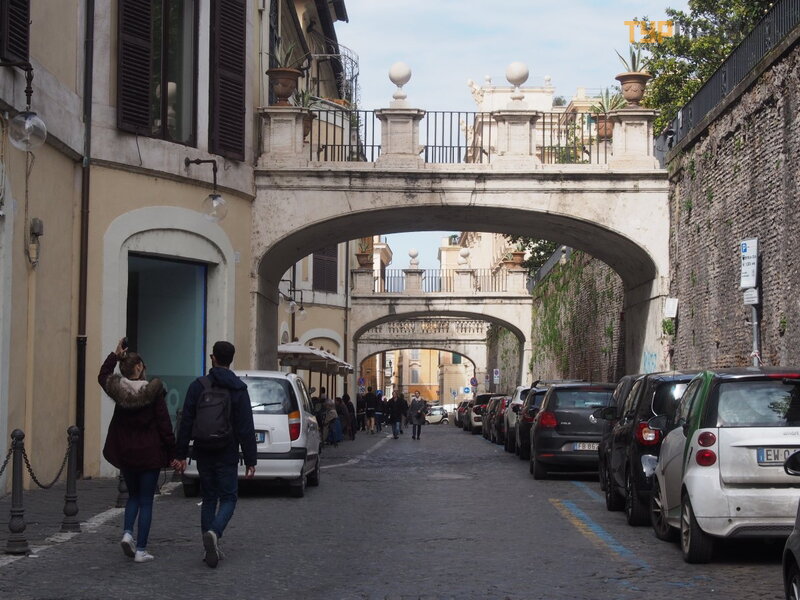
On Saturdays, paid tours are held in the palazzo and gardens, the gallery has an excellent collection of paintings and luxurious interiors. Entrance to the gardens and the palazzo is paid.
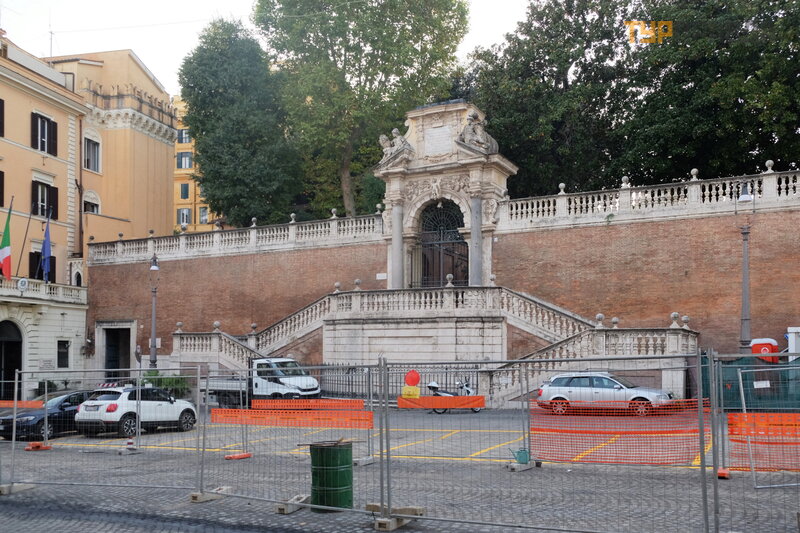
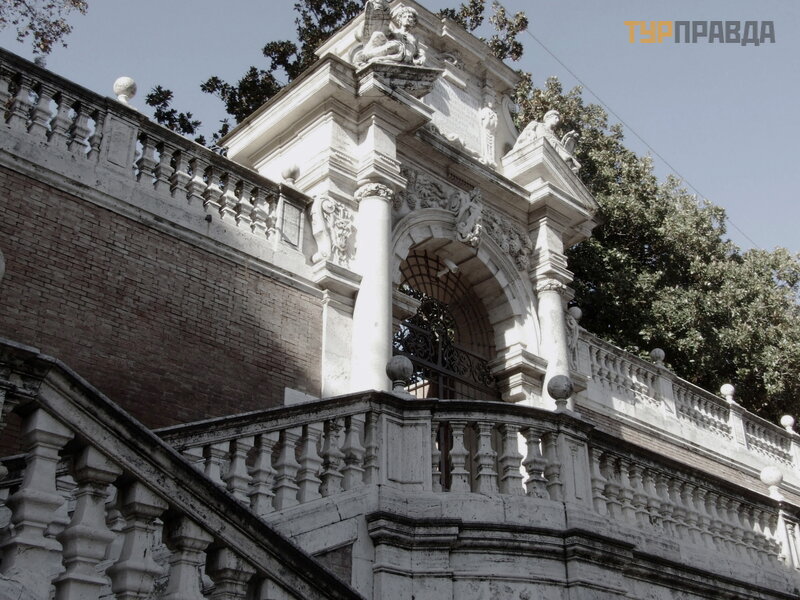
But the church of San Silverstro in Quirinale was closed for some reason. The church is famous for being the meeting place of the poetess and scientist Vittoria Colonna and Michelangelo. Vittoria was the only woman he loved.
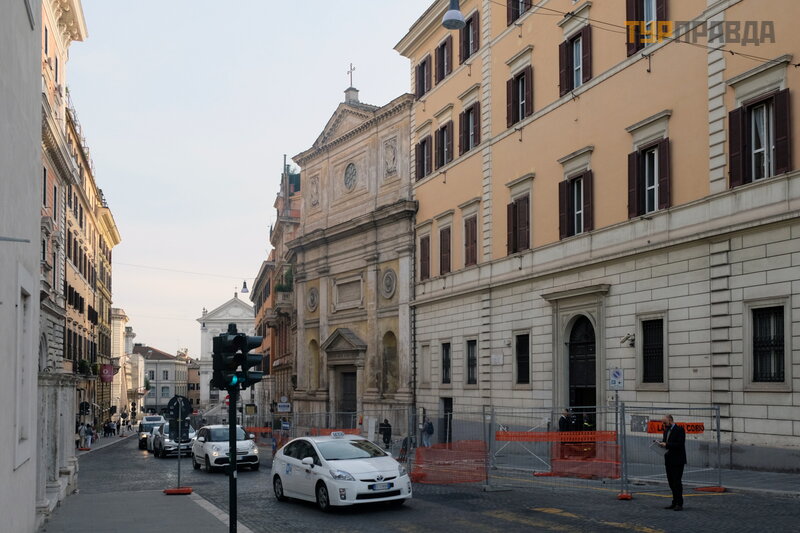
Let's go to the small round Piazza Magnanapoli, the crossroads of several streets, from where Via Nazionale begins. In the middle is a palm tree, legend says that this is the first place where palm trees were planted in Rome.
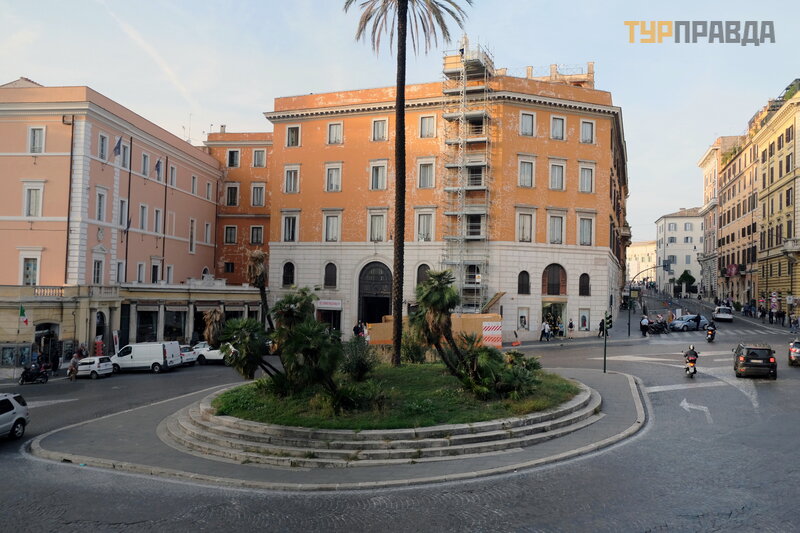
The northern part of the garden at Villa Aldobrandini overlooks the square, admission is free.
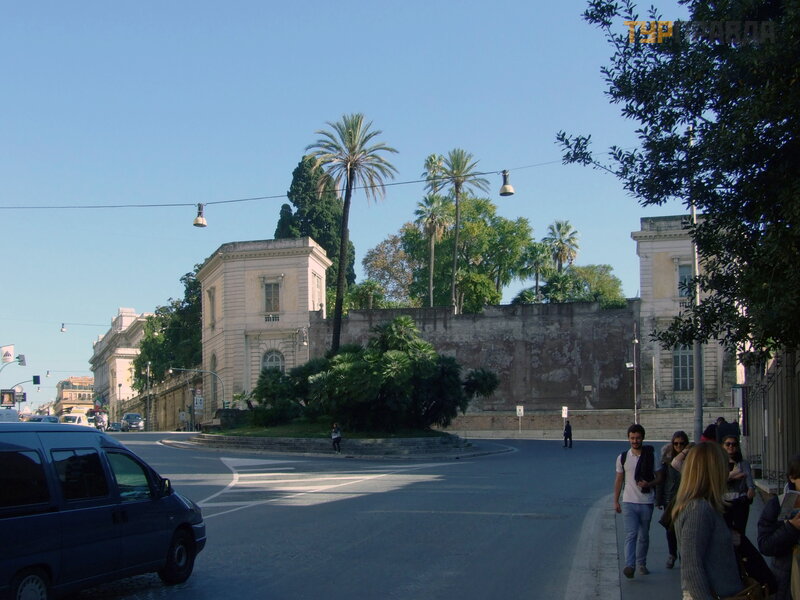
Via Nazionale is clearly visible from above:
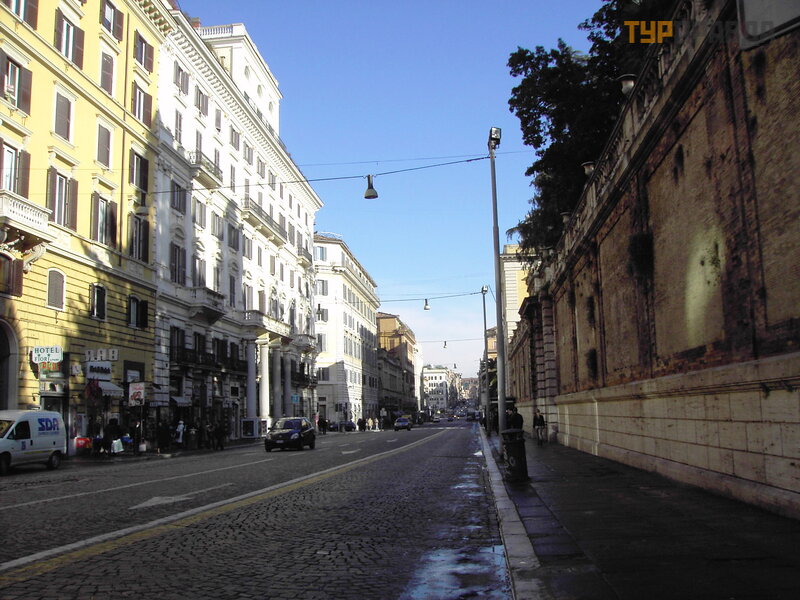
In front of the fvilla there is an orange garden with views of the Militia Tower and Trajan's Forum:
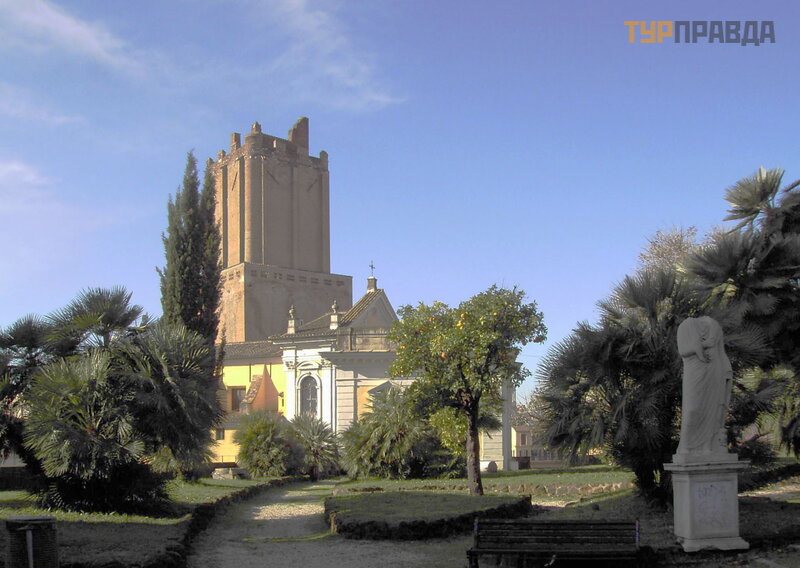
Medieval Milizie tower (Torre delle Milizie, XIII century):
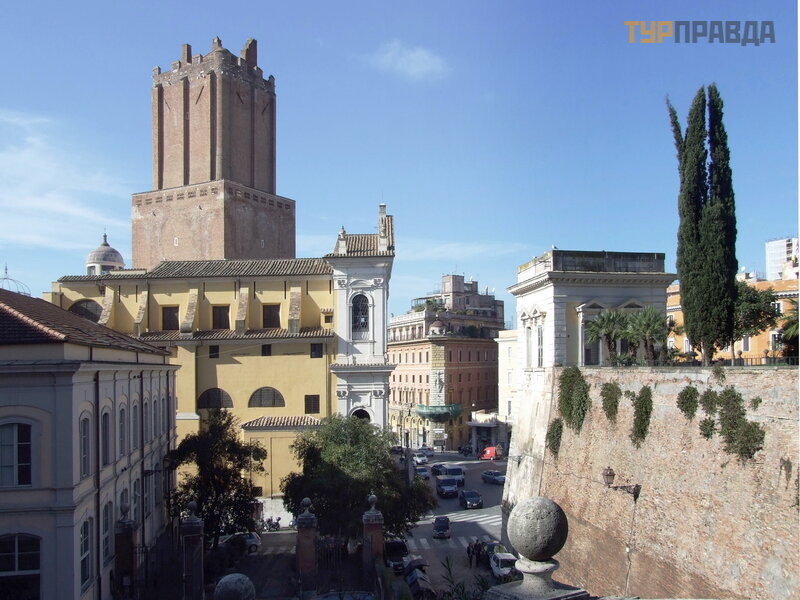
It is also clearly visible from the side of the imperial forums. A common legend is that it was from its summit that Nero admired the fire. In fact, the tower arose about ten centuries after Nero's fire, and Nero was not in Rome then.
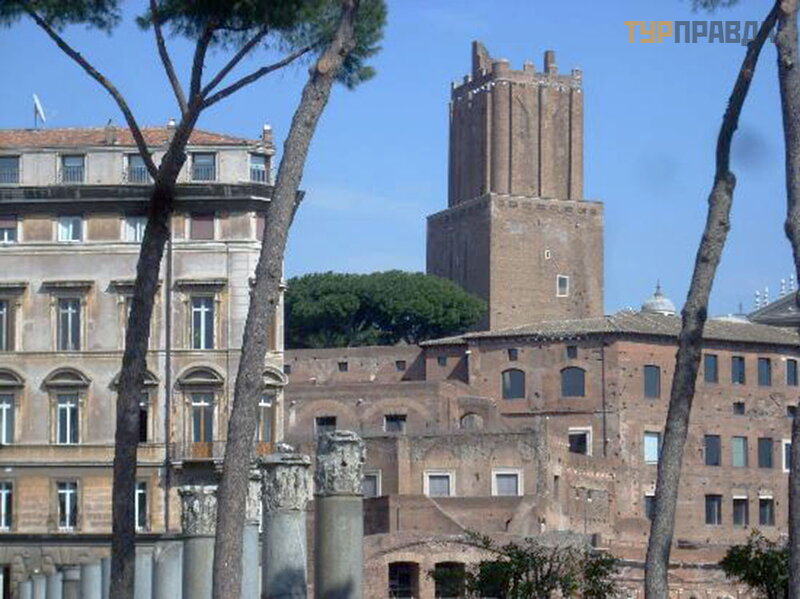
In front of the tower there is one church of St. Catherine of Siena. The construction of the current church began in 1608, according to the project of Carlo Maderno, ended only in 1641
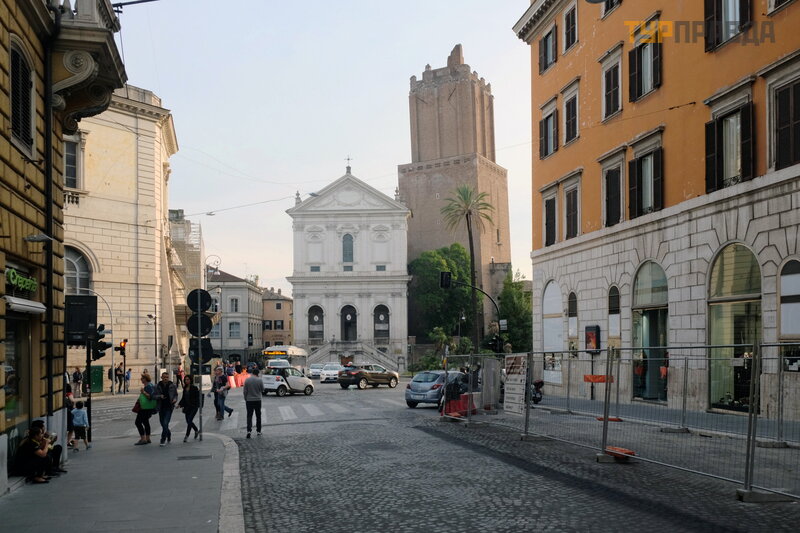
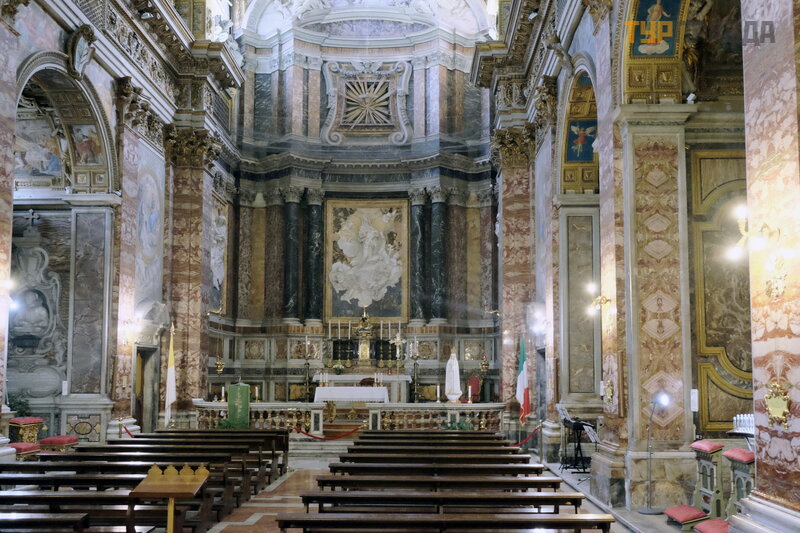
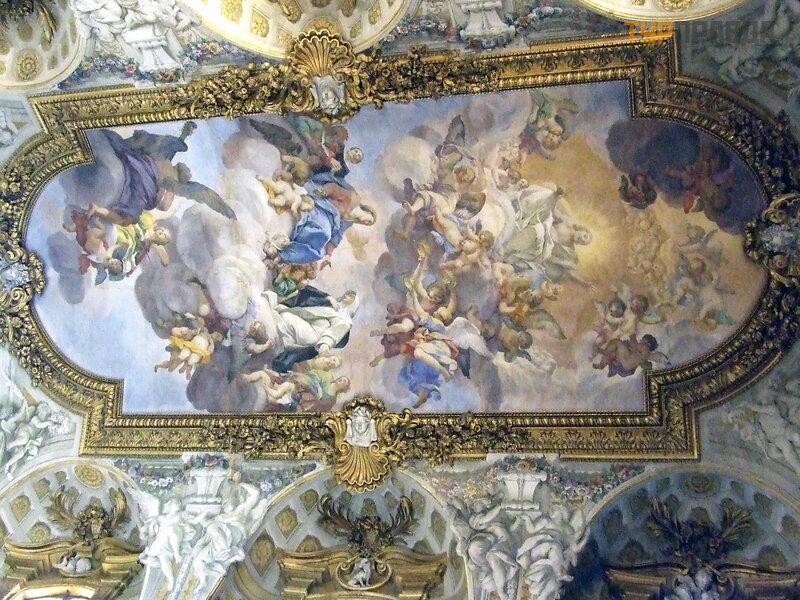
The altar sculpture "Ecstasy of St. Catherine" was created by Melchiore Cafa in 1667 and became a new masterpiece after Bernini's "Ecstasy of St. Teresa".
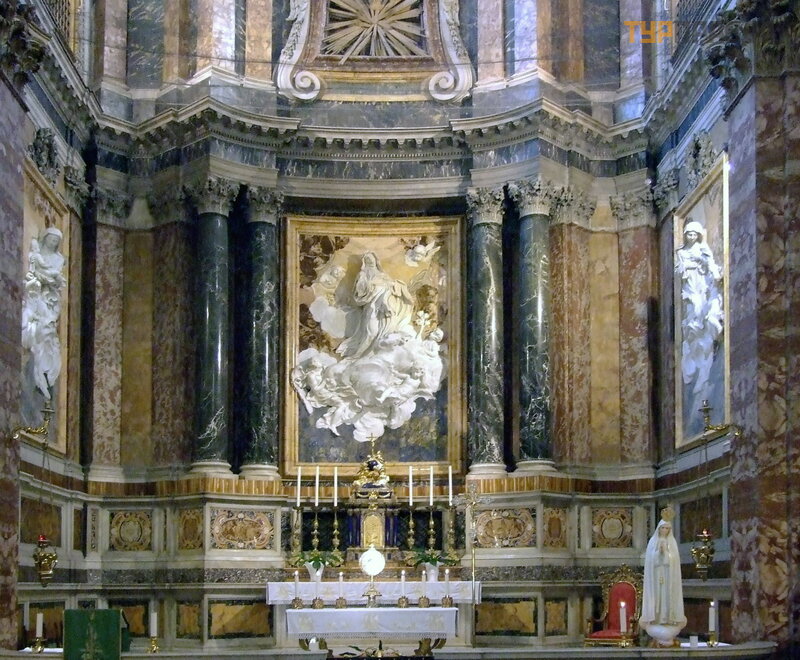
There are two more churches at the foot of the villa.
Sant'Agata dei Goti (Sant'Agata dei Goti), built in the 5th c. Goths, adherents of the Arian creed.
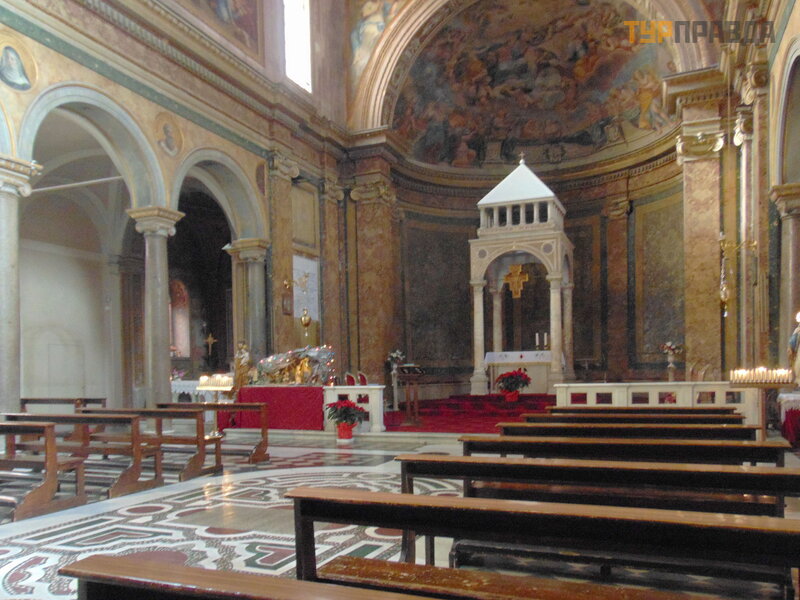
This is the only religious structure of the Goths in Rome that has survived to this day. New facade - XVIII century.
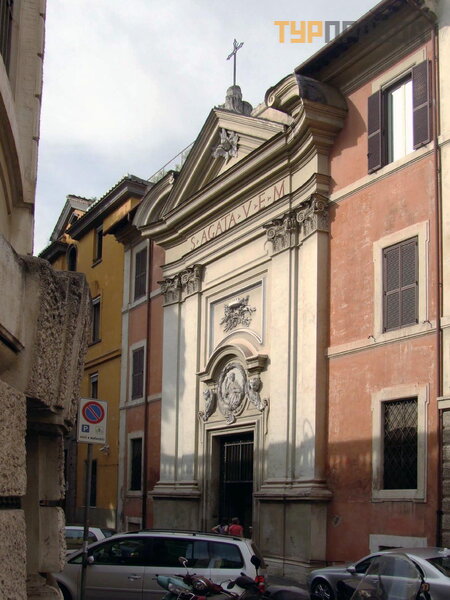
A steep staircase leads to the church of Santi Domenico e Sisto. The current view is the middle of the 17th century.

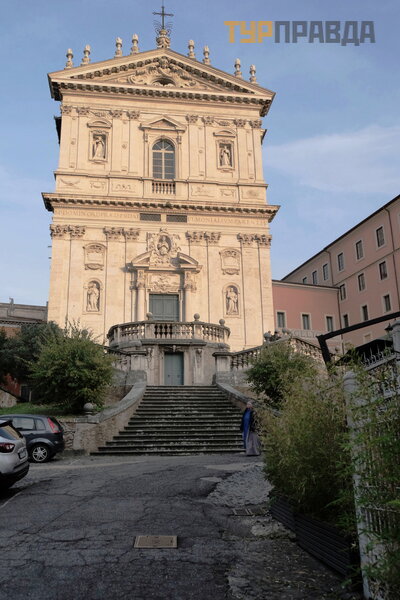
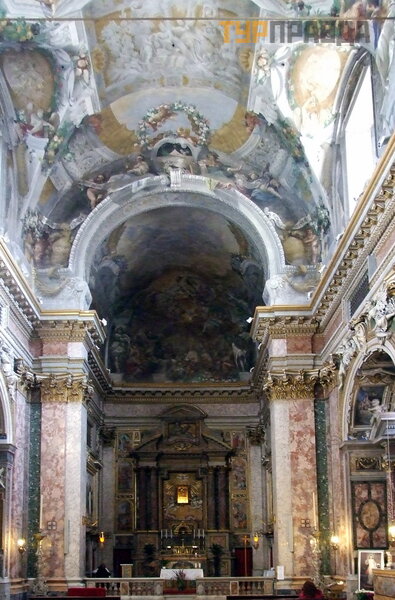
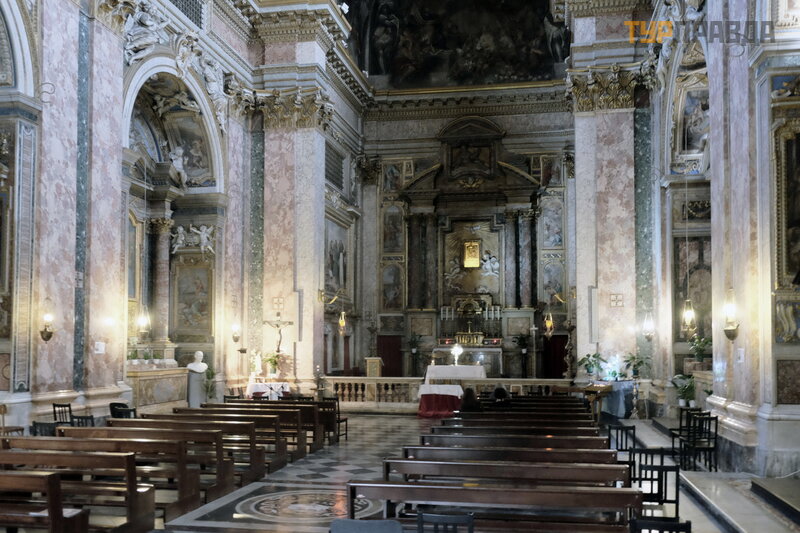
The main altar was designed by Bernini.
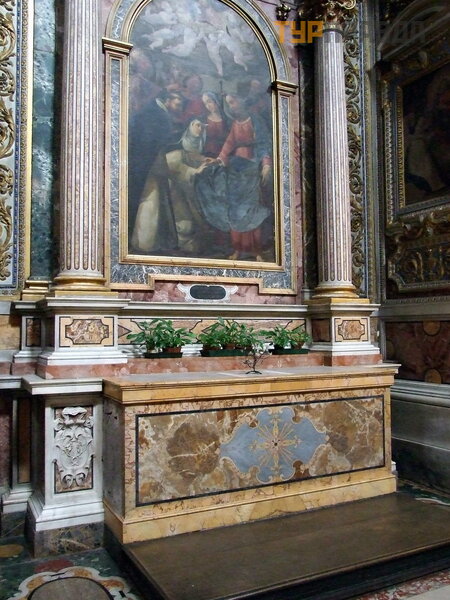
According to his sketches, Antonio Raggi made a sculptural group called "Do not touch me":
From the church, you can see the Tower and the Palazzo del Grillo, a Rococo palace whose owner became famous for firing stones from the window of all Jews passing by from the Tower (1223). It was easy to aim: according to the decree of Paul IV Karafa, who drove the Jews into the ghetto, they all had to wear yellow hats. When he was forbidden to do this, he switched to cones and fruits.
From here there is a passage to the market and the Troyan forums, but we turn the other way.
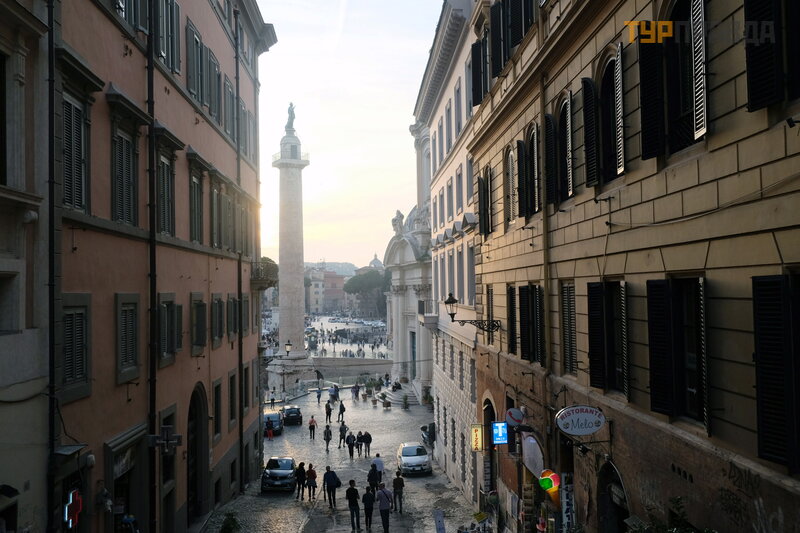
Palazzo Colonna has another faç ade overlooking Via Santi Apostolo.
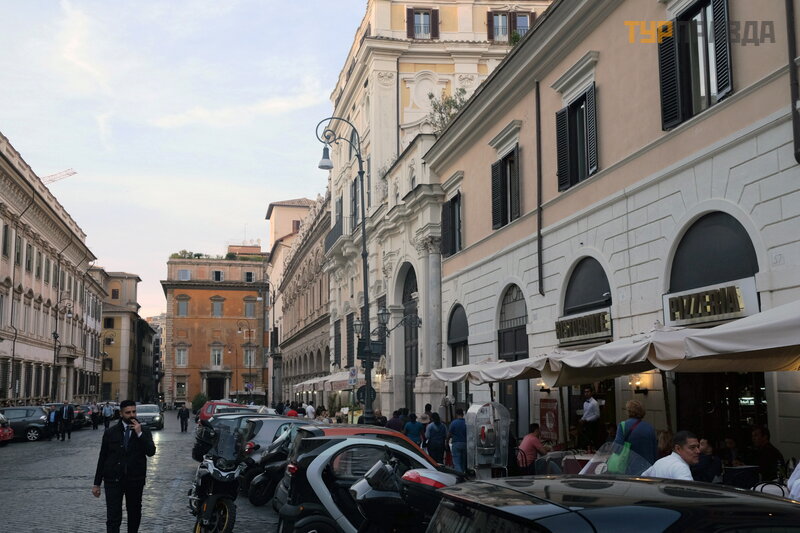
The Church of Santi Apostolo, built into a palazzo, used to be the church of the Colonna family. Significantly rebuilt in 1714 according to the design of Francesco and Carlo Fontana.
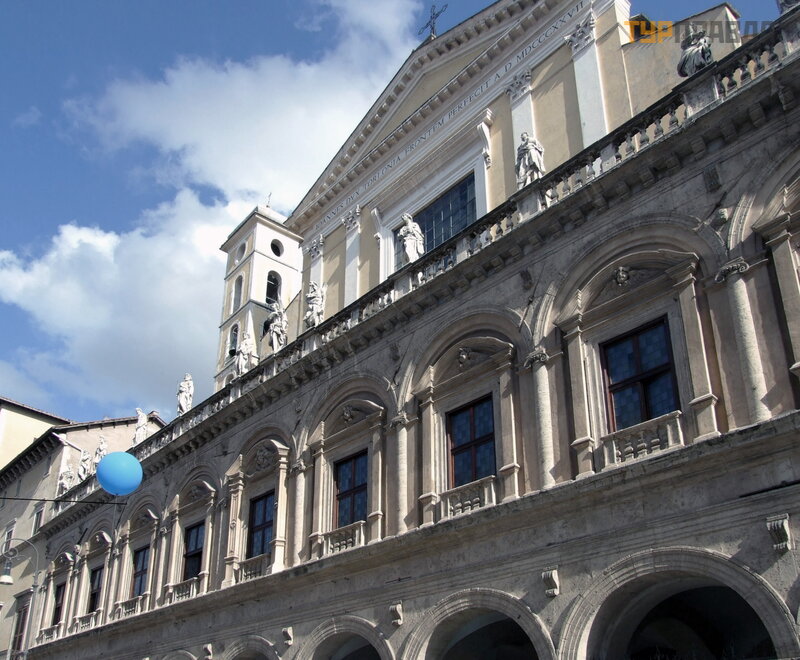
At the same time, the magnificent frescoes of Melozzo de Forli were removed, some of them in the Vatican Pinacoteca, some in the Quirinal Palace.
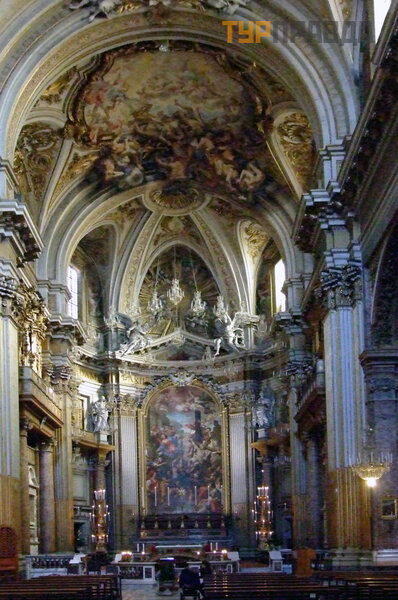
Originally, the tomb of Michelangelo was located in this basilica, as the bas-relief in the cloister of the church reminds of.
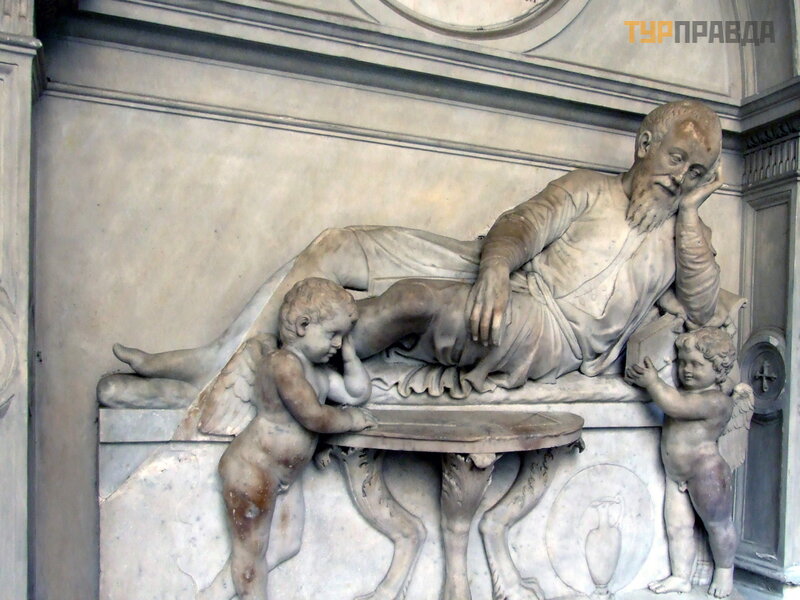
The relics of the apostles Jacob Alfeyev and Philip lie in the crypt in the cathedral to this day.
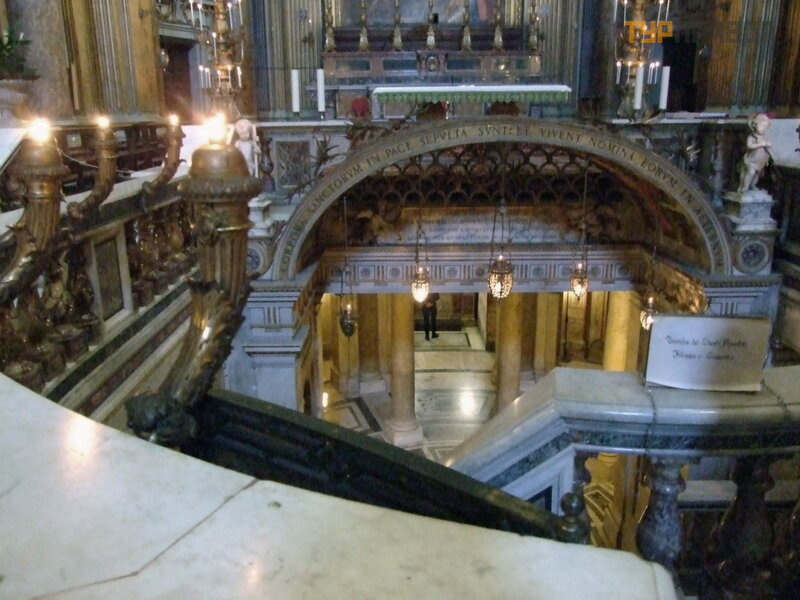
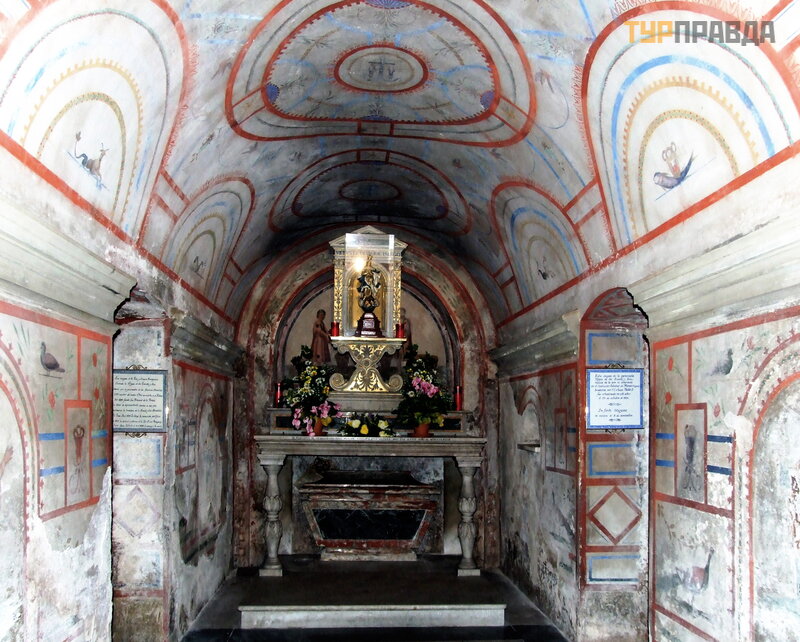
The tombstone of Pope Clement XIV is Antonio Canova's first work in Rome.
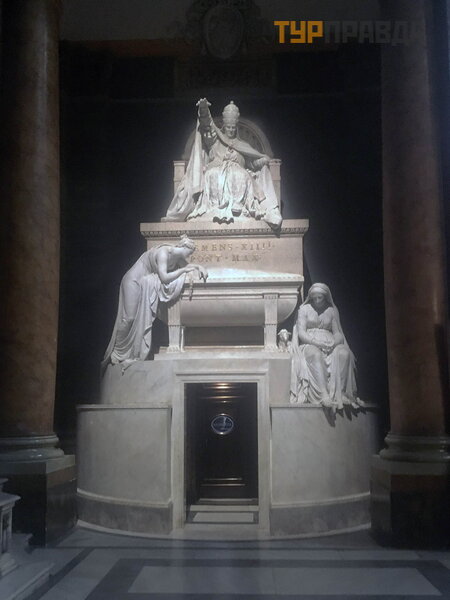
Nearby is the Pontifical Gregorian University, founded in 1551 by Ignacio Loyola and Francis Borgia. Curious,
that until 1970 many subjects were taught in Latin.
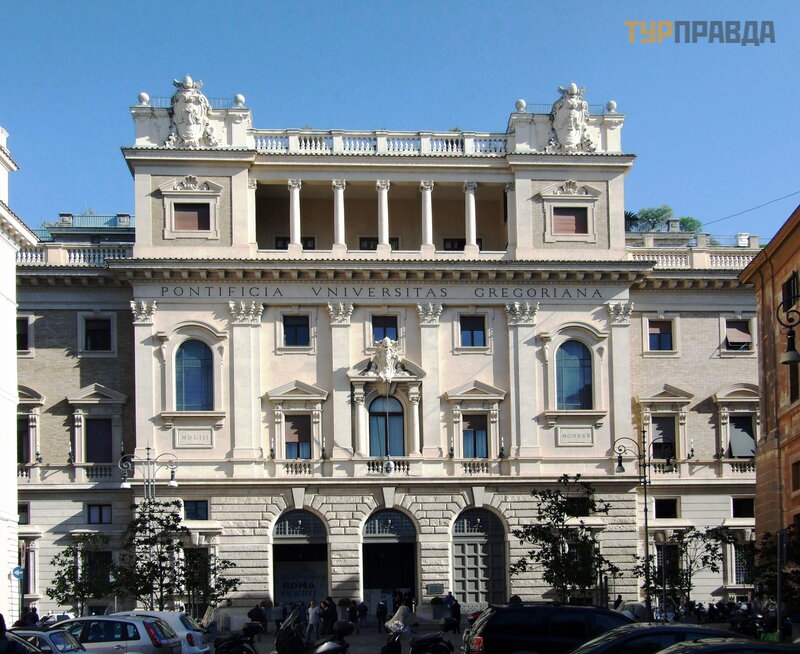
Let's go to the Trevi Fountain to throw a coin. It's already getting dark in autumn.
Five years ago, the fountain was found like this:
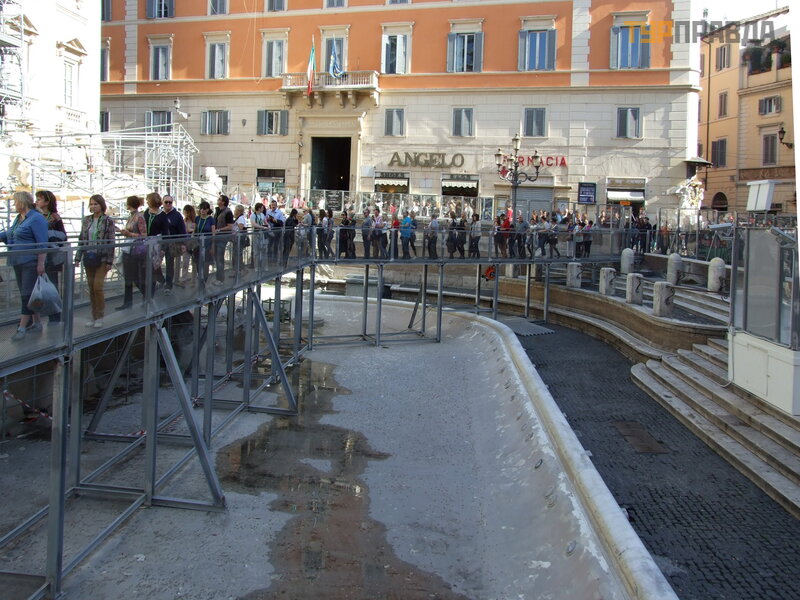
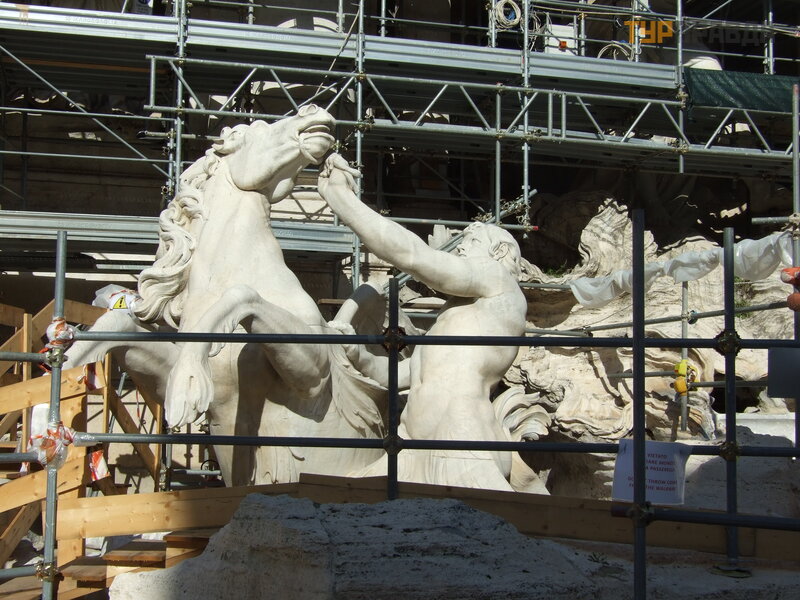
The modern facade of the ancient medieval Palazzo Poli in Rome was designed by the famous architect Luigi Vanvitelli, who built the palace in Caserta. And Nicola Salvi and Pietro Bracci created a real masterpiece on its facade. The fountain was inaugurated by Pope Clement XIII in 1762.
In front of the fountain Church of St. Vincenzo and Anastasio, modern faç ade (1644-1650). It is interesting because, being the house church of the nearby Quirinal Palace, the summer residence of the Pope in Rome,
is the keeper of containers with hearts of 25 Popes from Sixtus V to Leo XIII.
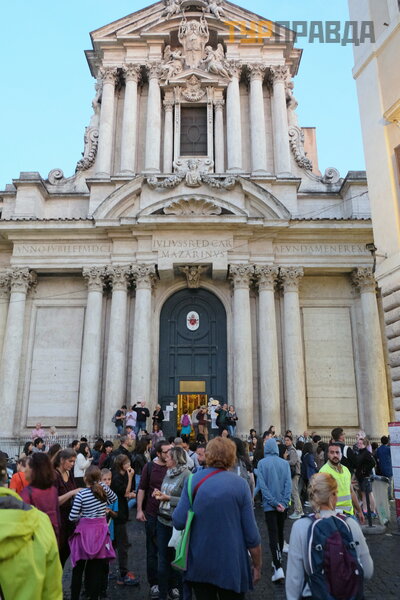
Princess Volkonskaya, who was friends with A. S. Pushkin and N. V. Gogol, is buried in the church. Volkonskaya filmed the top floor of the Palazzo Polly. The church in 2002 was transferred to the Bulgarian Orthodox Church for worship. Now the Orthodox can put a candle in front of the icons without violating the rites.
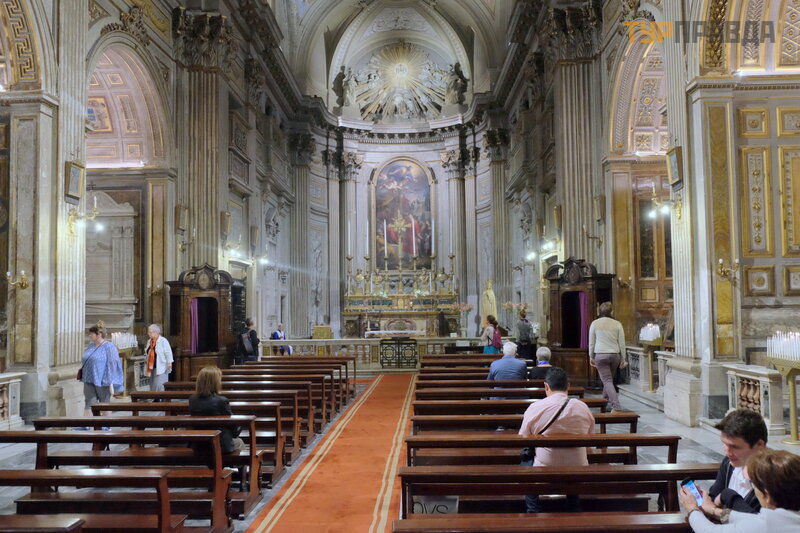
Next to the Spanish Steps.
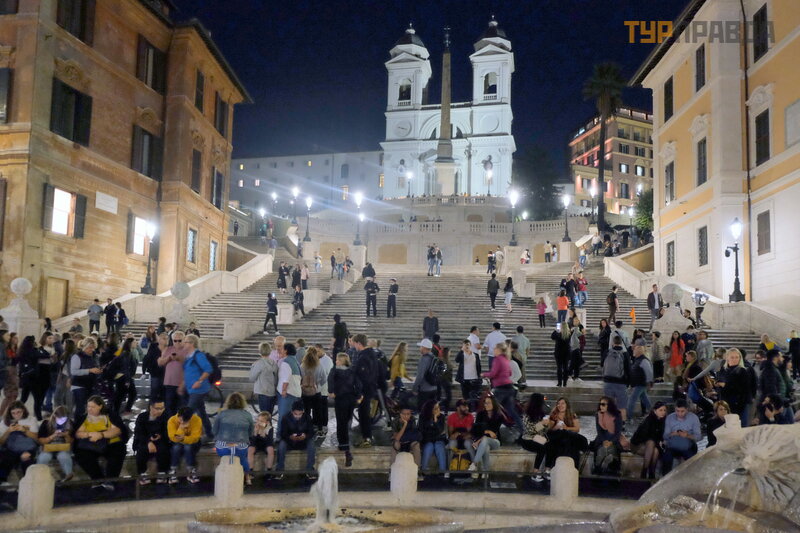
Beautiful fountain "Barcaccia" ("Boat") 1627-1629, which was designed by Pietro Bernini, father of Giovanni Lorenzo Bernini.
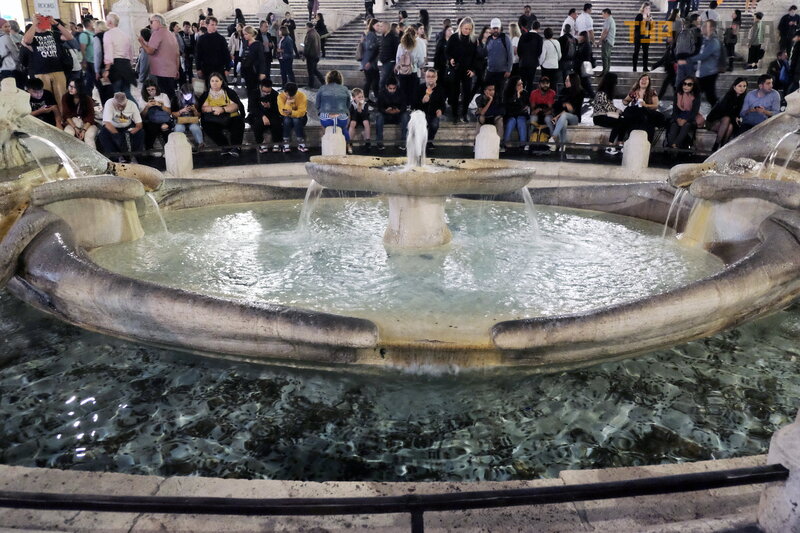
Piazzo del Poppolo was reached along Via Babuino, so named because of the fountain with the statue of the deity Silenus, which was so ugly and similar to a monkey that the townspeople began to call the street that way.
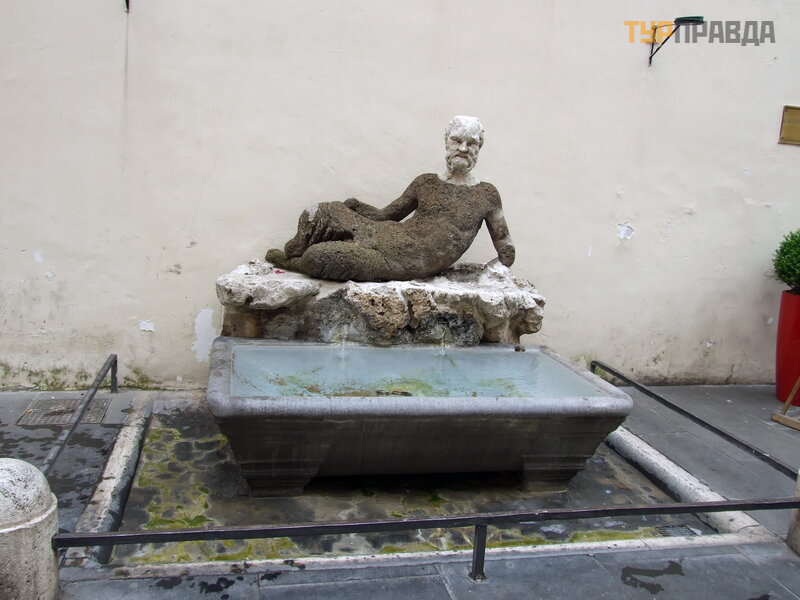
Let's go to Piazzo del Poppolo to the church of Santa Maria del Poppolo, which, in terms of the number of masterpieces located there, will give odds to many museums in the world. Its faç ade does not draw attention with sophisticated finishes or unusual shapes, but unique treasures hide behind the walls of a modest-looking building.
The church was built on the burial site of Emperor Nero, the chapels were redeemed by very wealthy Roman families, each of which attracted great masters for decoration.
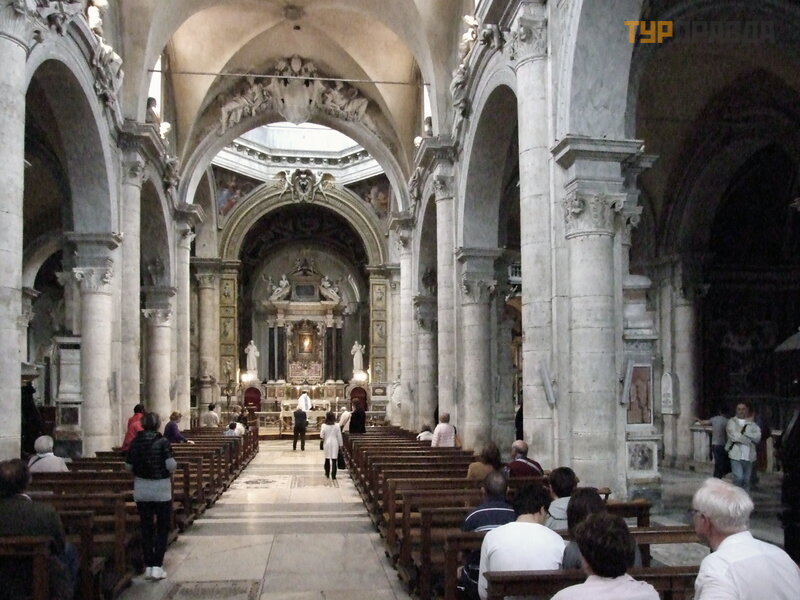
In the center of the altar there is an icon depicting the Virgin Mary with a baby on a golden background. In the XIII century, this icon was transferred here from the Lateran Basilica. Legend has it that the icon was painted by the Evangelist Luke and is the first depiction of the Virgin Mary.
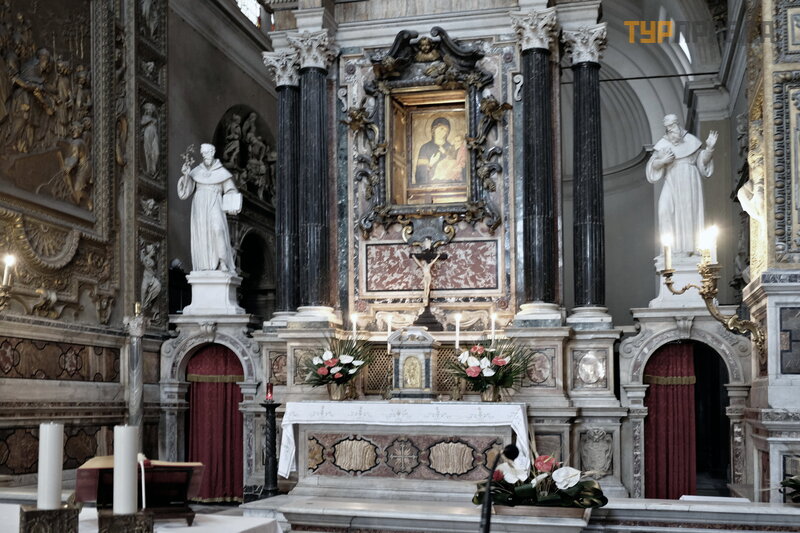
Altar dome:
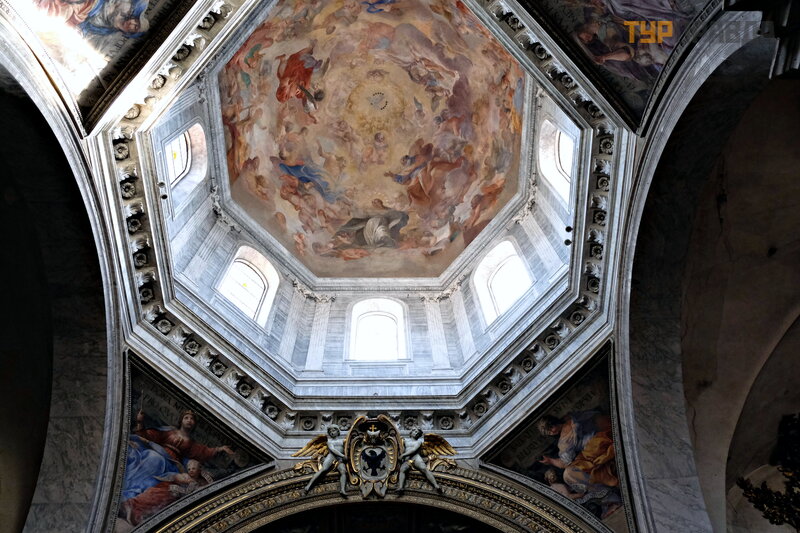
The banker Chigi's family chapel is now well known because of the film based on Dan Brown's book Angels and Demons. The future tomb of a wealthy family was designed by Raphael himself.
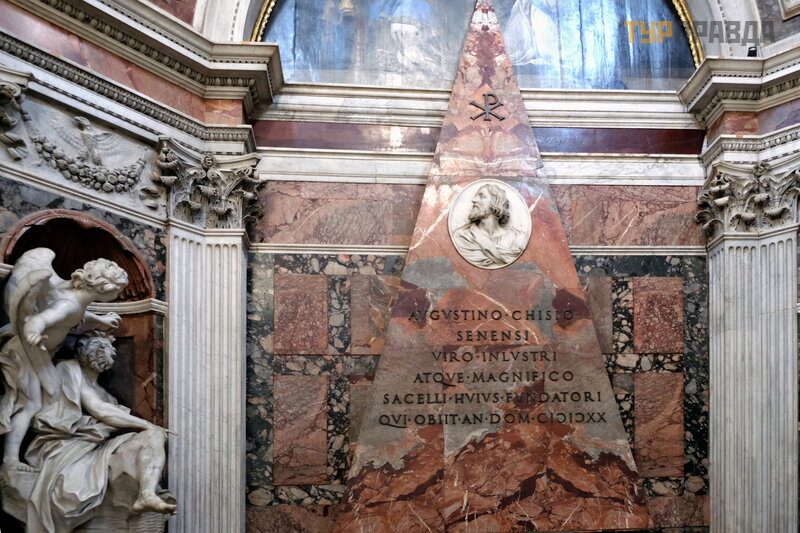
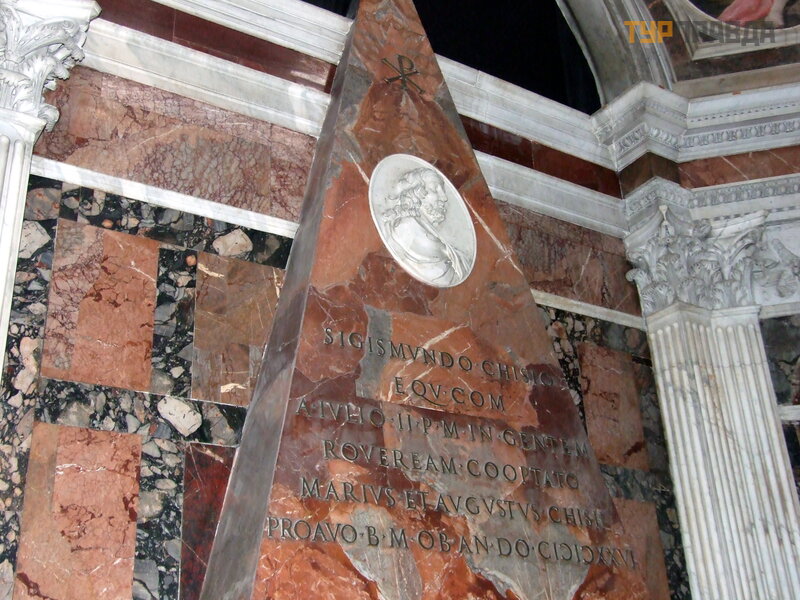
Luigi de Pace (based on drawings by Raphael) decorated the dome of the chapel with the Creation of the World mosaic.
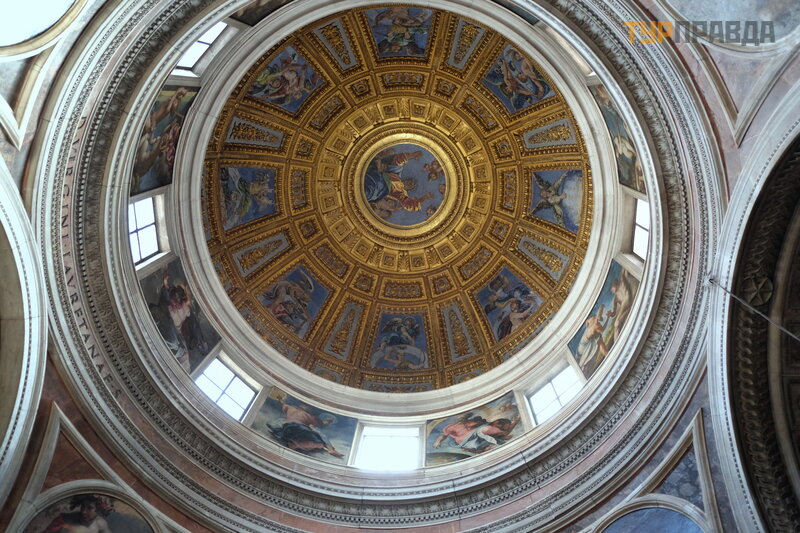
In the altar there is oil painting on stone "The Birth of the Virgin Mary" by Sebastiano Del Piombo.
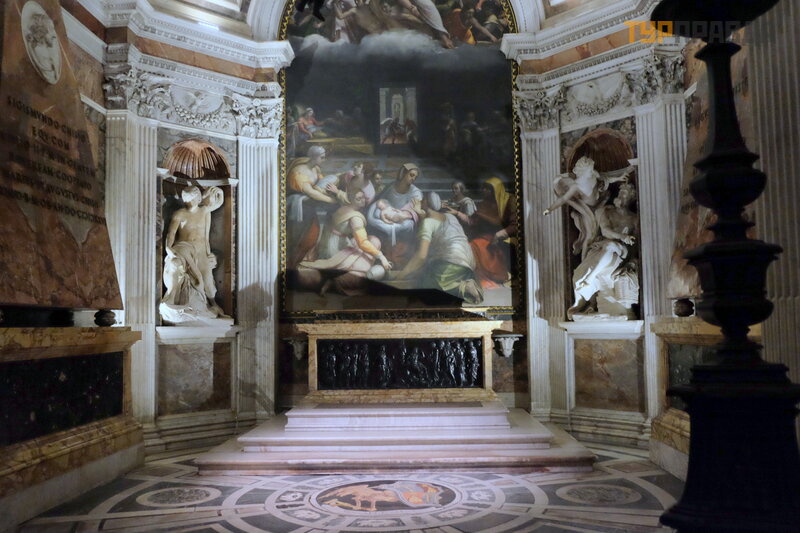
Later, Bernini reconstructed the chapel by order of another member of the family, Cardinal Fabio Chigi, who later became Pope Alexander VII. He is also the author of this mosaic, which Dan Brown called "Devil's Hole". In the hands of the skeleton is the family coat of arms of the Chiji clan.
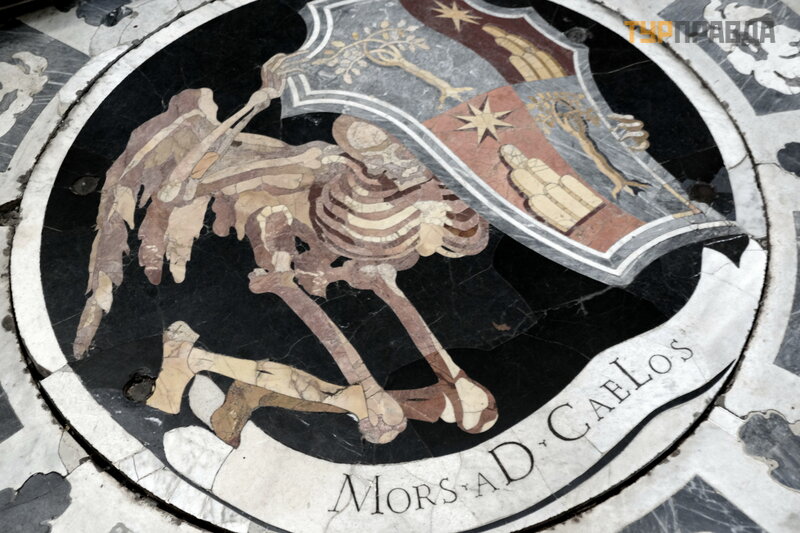
Bernini and Lorinzetti are the authors of the statues of the prophets in the chapel.
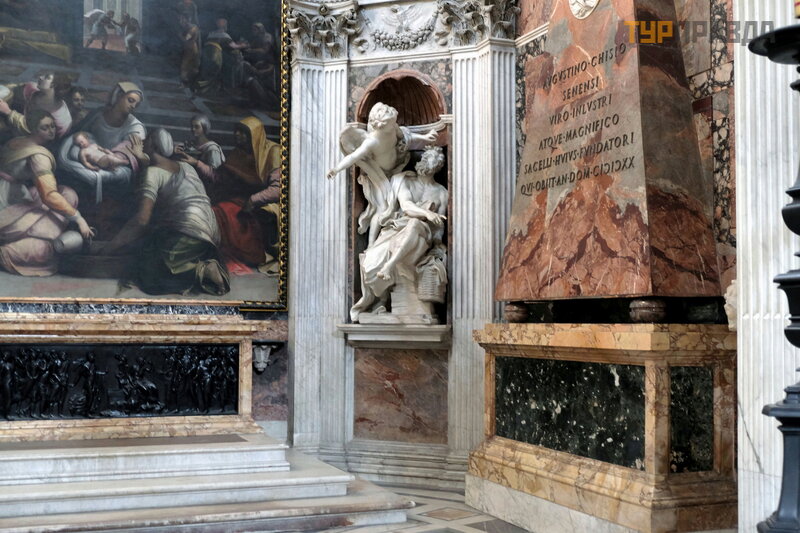
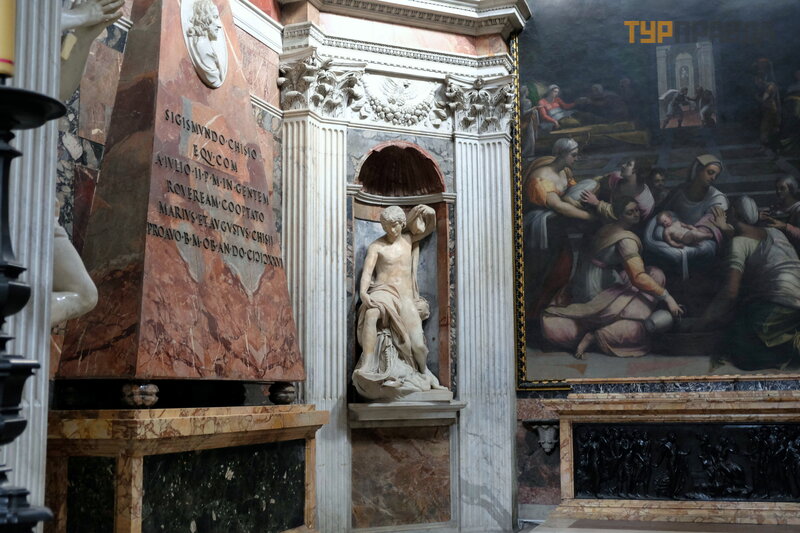
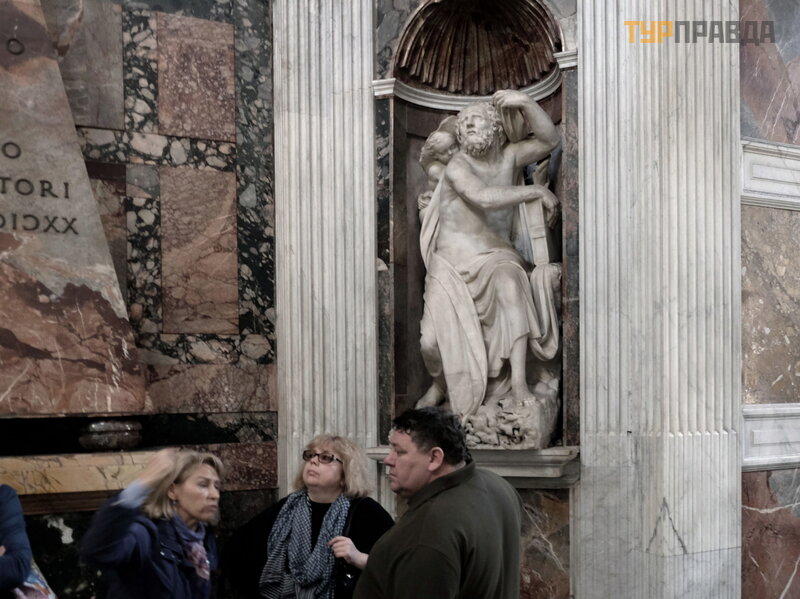
Della Rovere Chapel. It was built at the end of the 15th century and painted by Pinturicchio and his students.
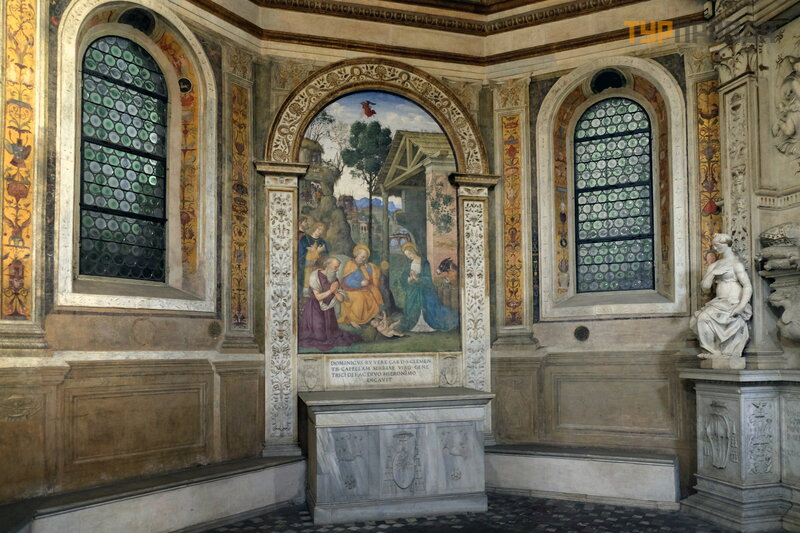
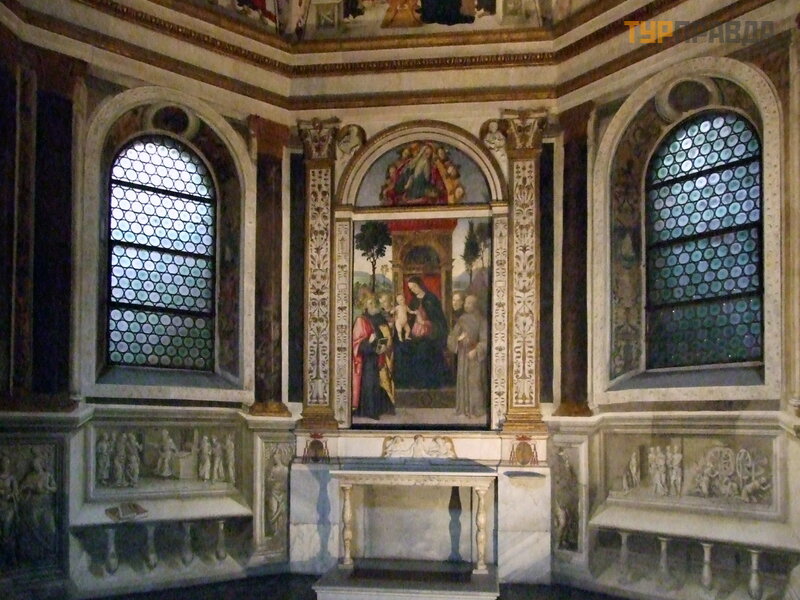
The Cibo Chapel is one of the most beautiful in the church. Made according to the sketches of Carlo Fontana, richly decorated with precious rocks of multi-colored marble. Altar painting by Carlo Morata, 1686
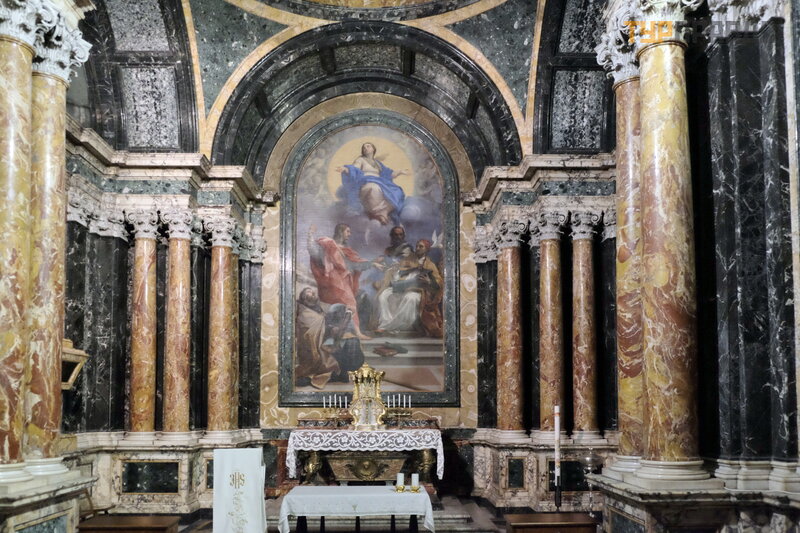
Melini Chapel:
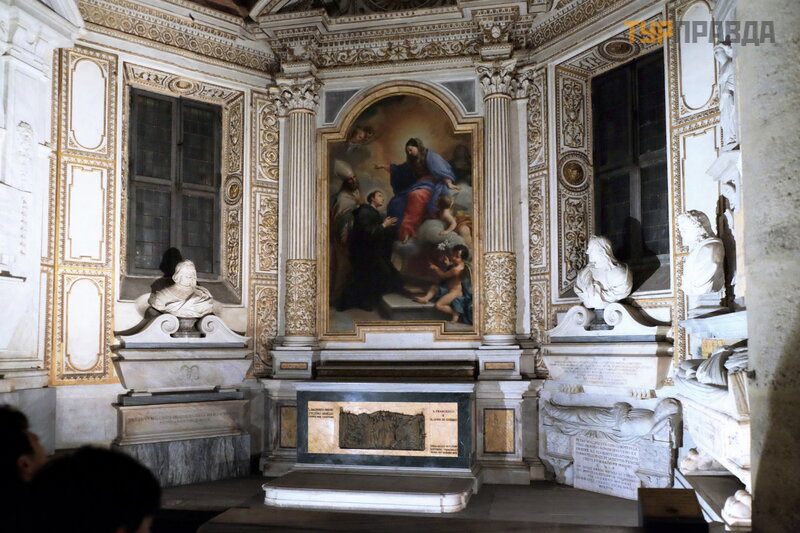
The eerie tomb of the architect Ghysleni, designed and built by him in 1670, two years before his death. On the tombstone is the inscription: "Death is a symbol of life. "
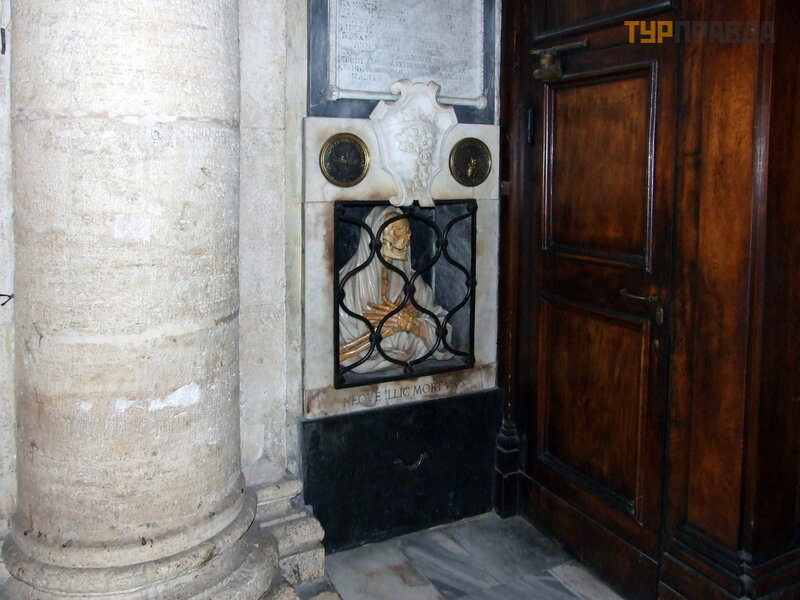
Pompous monument to Princess Odescalchi Chigi (1772):
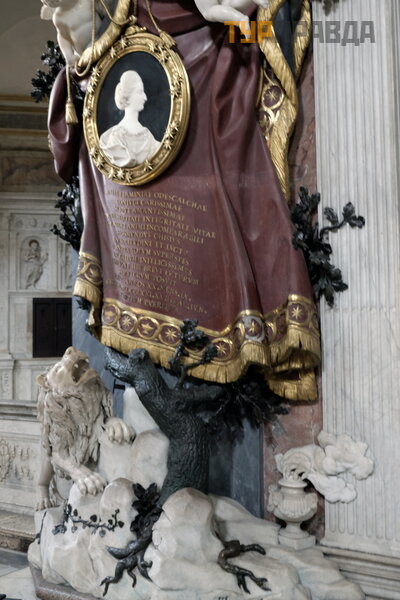
The apse was designed by Bramante. Tomb of Cardinal della Rovere, sculptor Sansovino.
Caravaggio's paintings are in the small Cerazo Chapel.
The altarpiece is the work of Annibale Carracci (1601), who was then considered the leading painter of Rome.
Here Caravaggio first showed himself as a brilliant painter, destroying the old church canons of depicting saints. Even though the Carraci painting takes center stage above the altar. . .
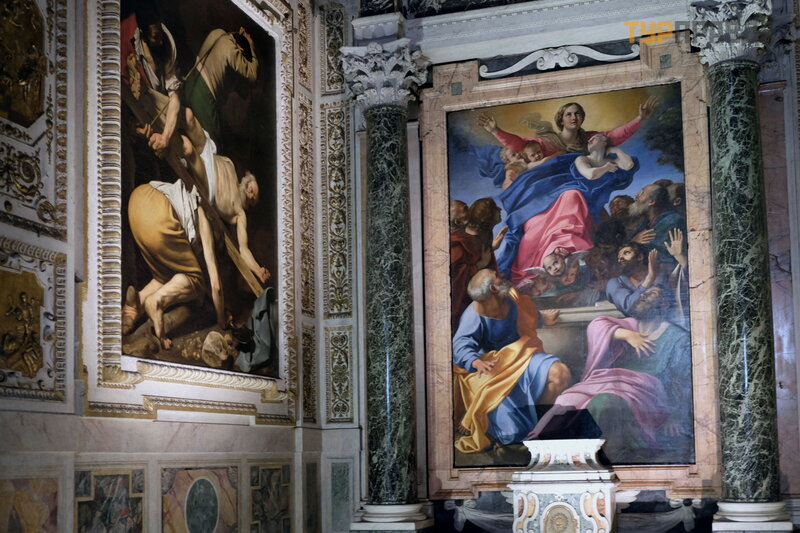
. . . it could not stand any comparison with the masterpieces of Caravaggio "Conversion on the road to Damascus" ("Conversion of Saul"). . .
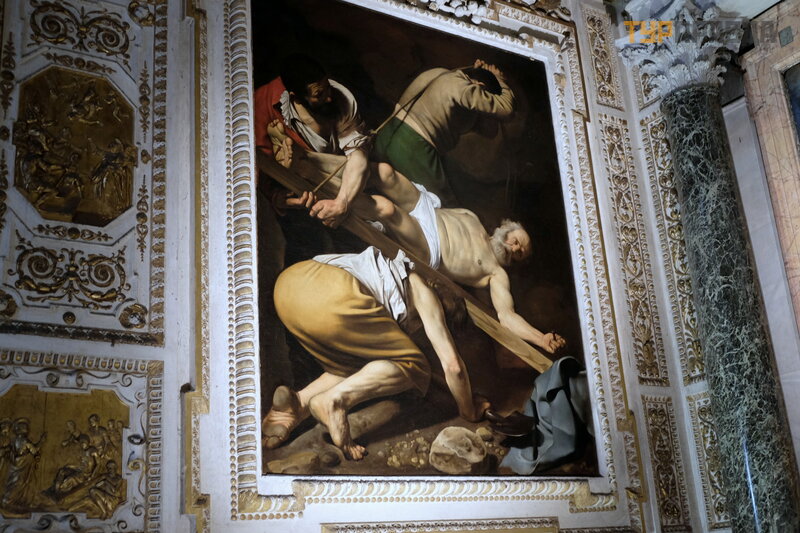
. . . and "The Crucifixion of the Apostle Peter".
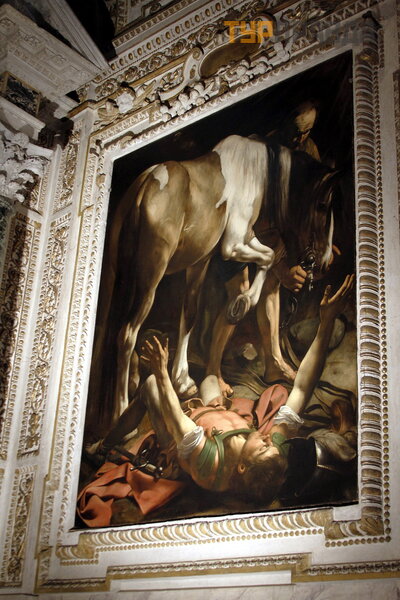
The Church of Santa Maria del Poppolo was a worthy end to this eventful day.
The next day we flew home, but spent half a day walking around Rome.
Continued here >>>
